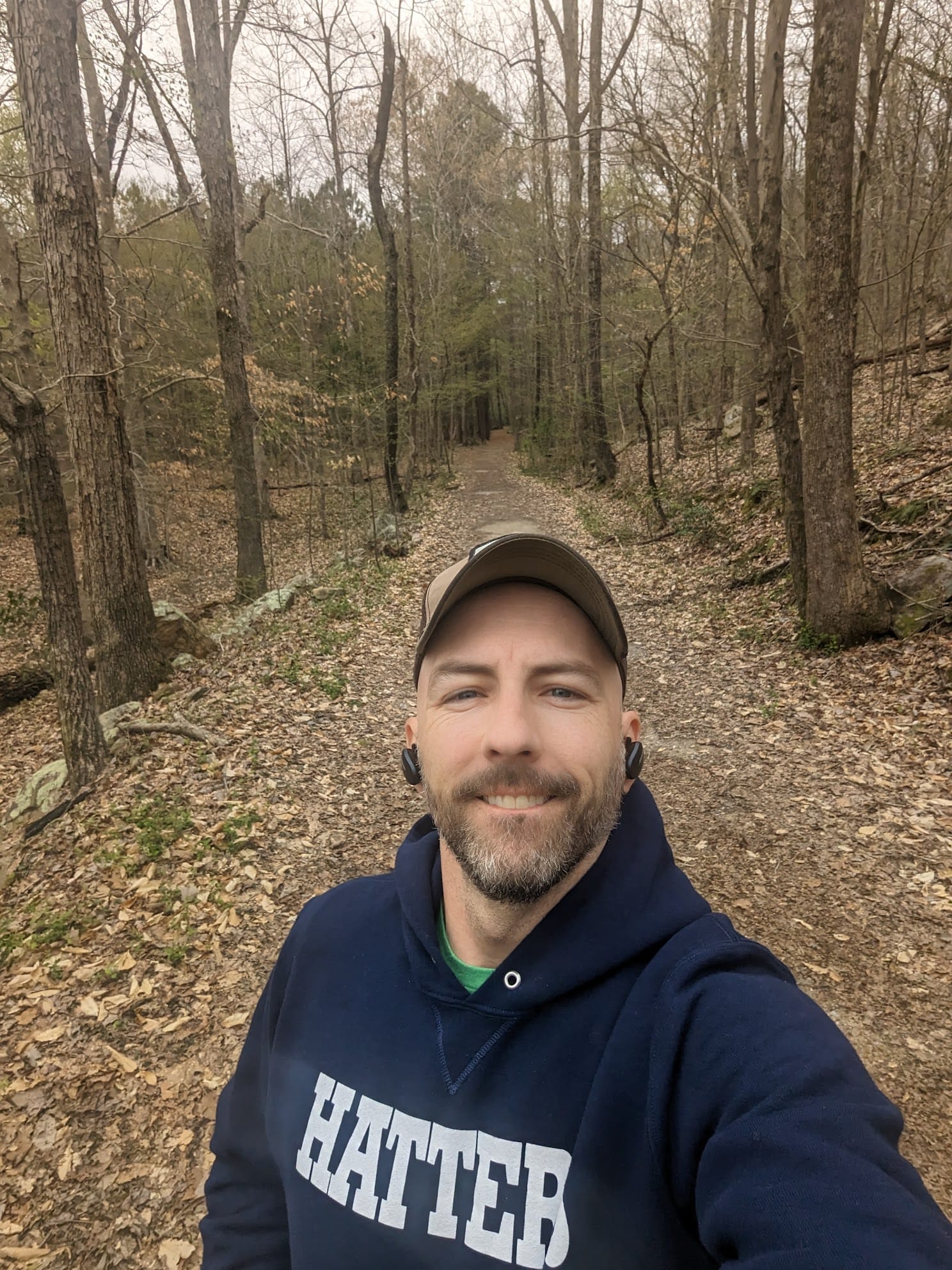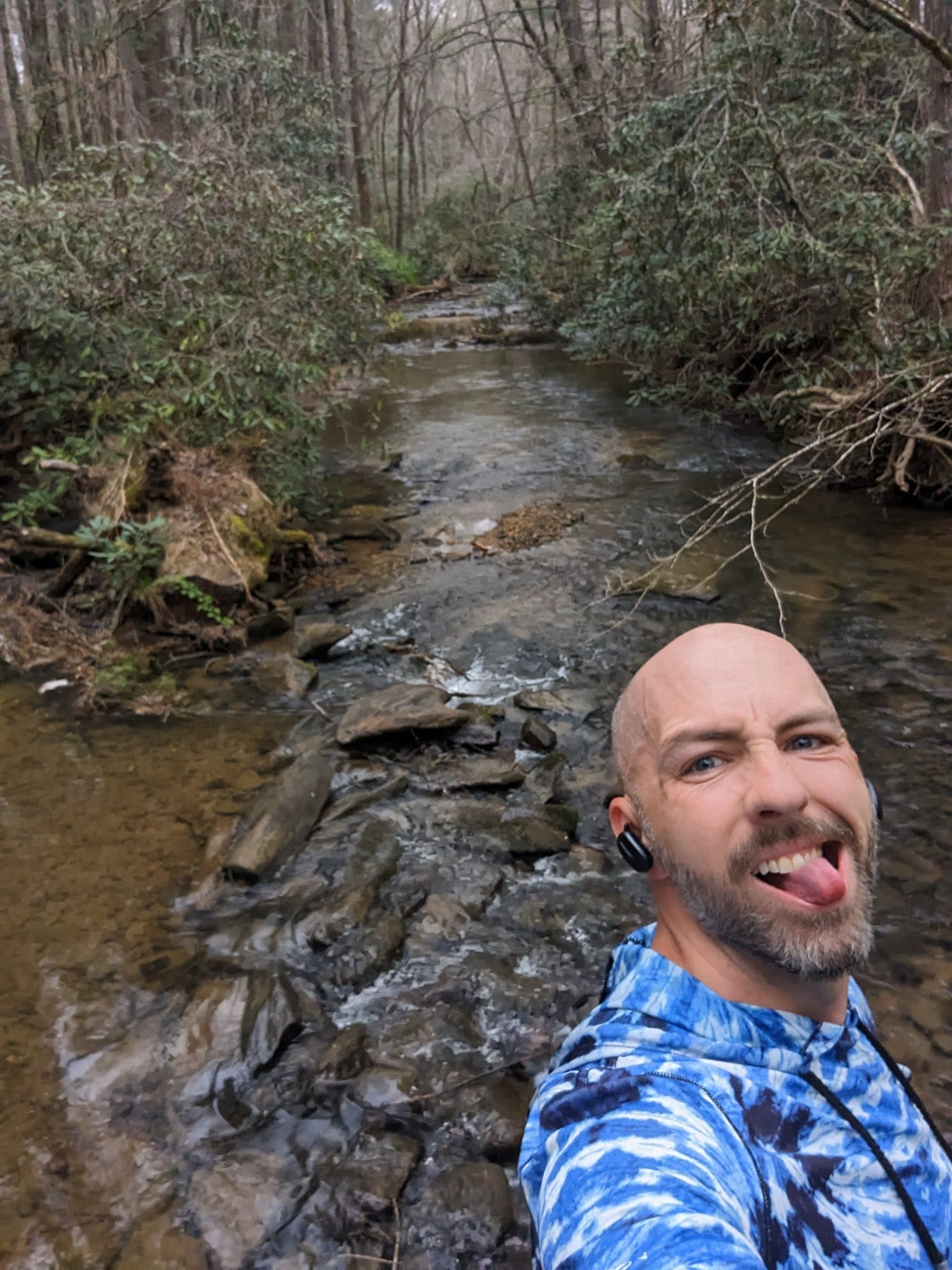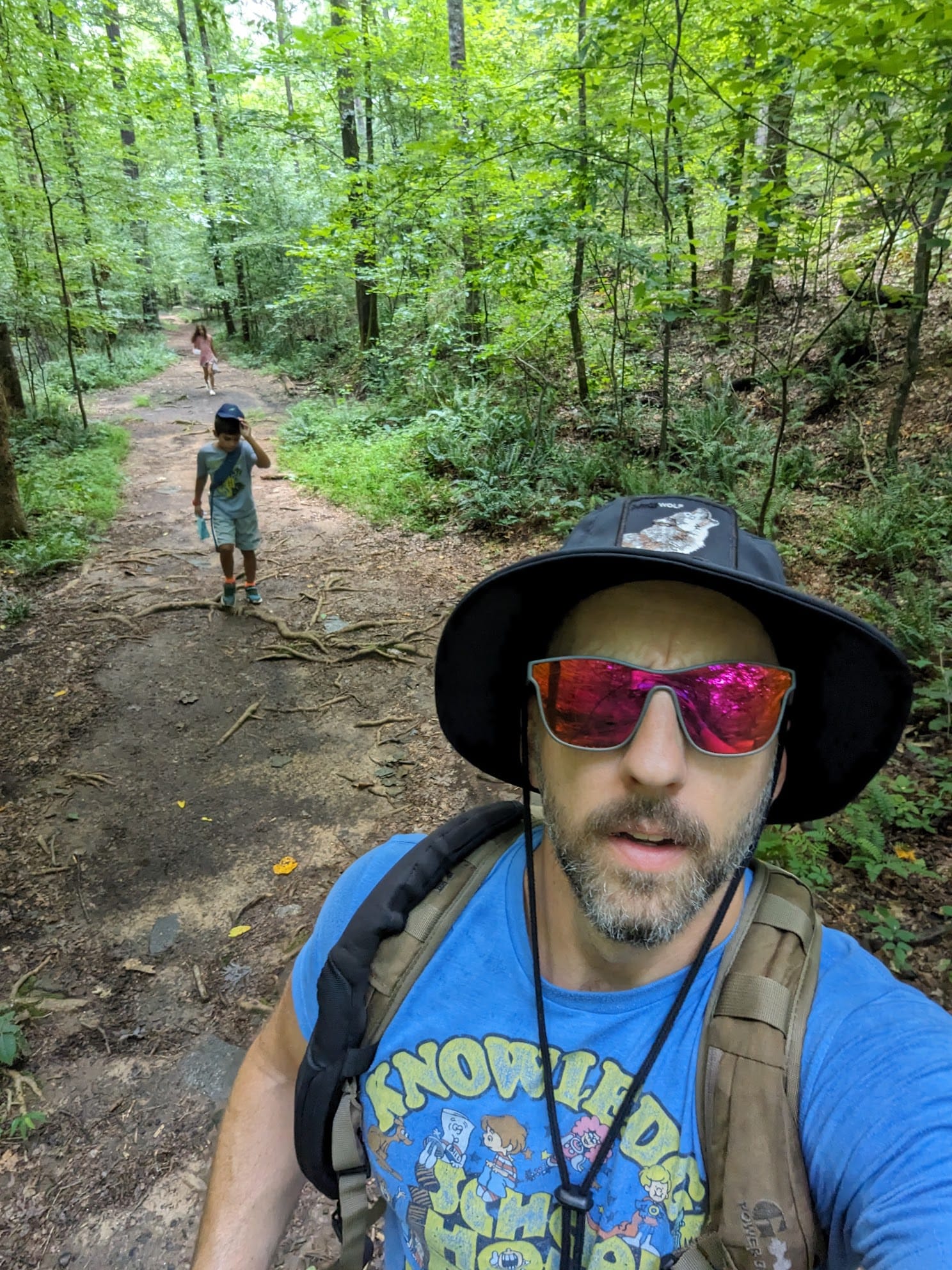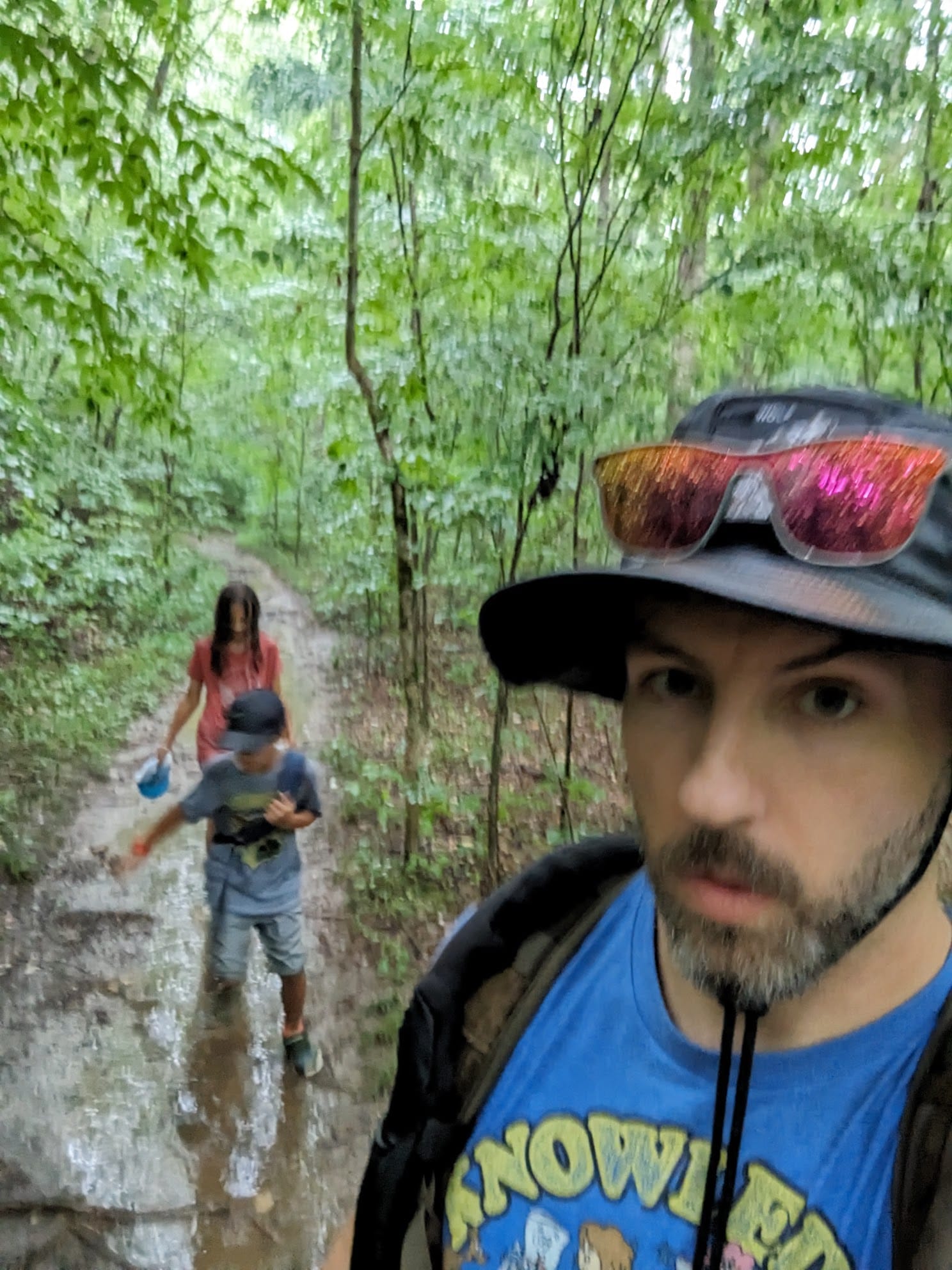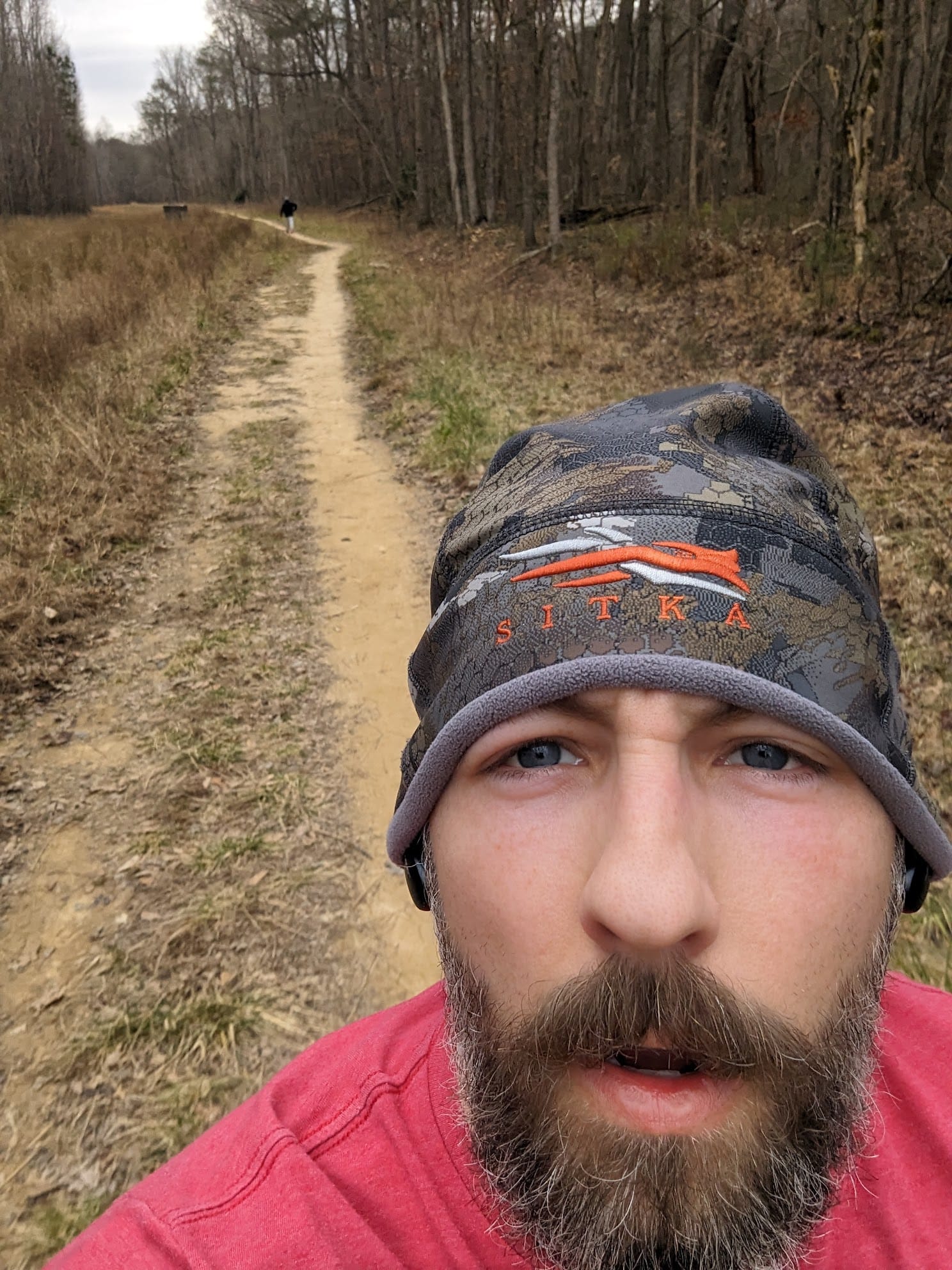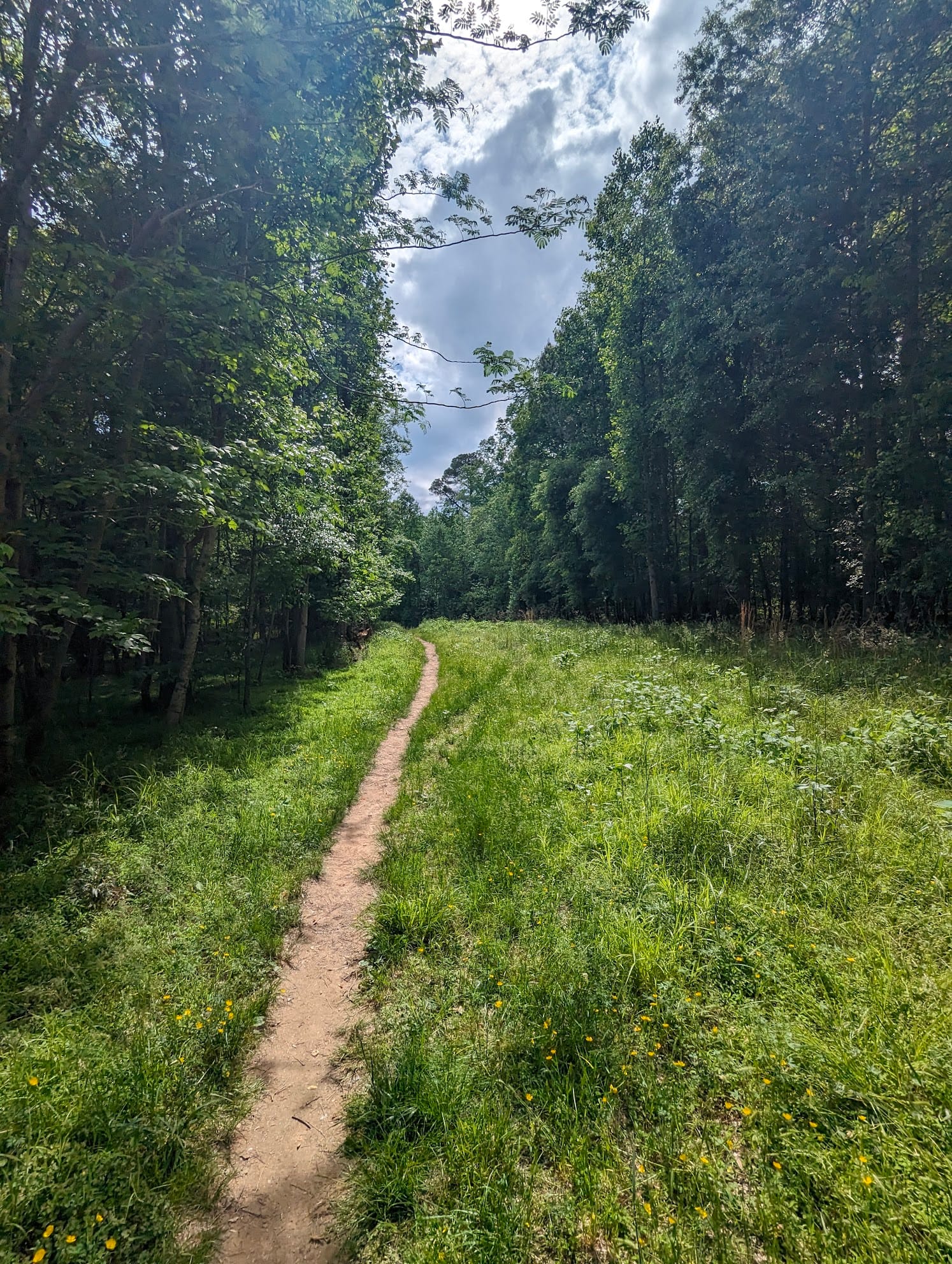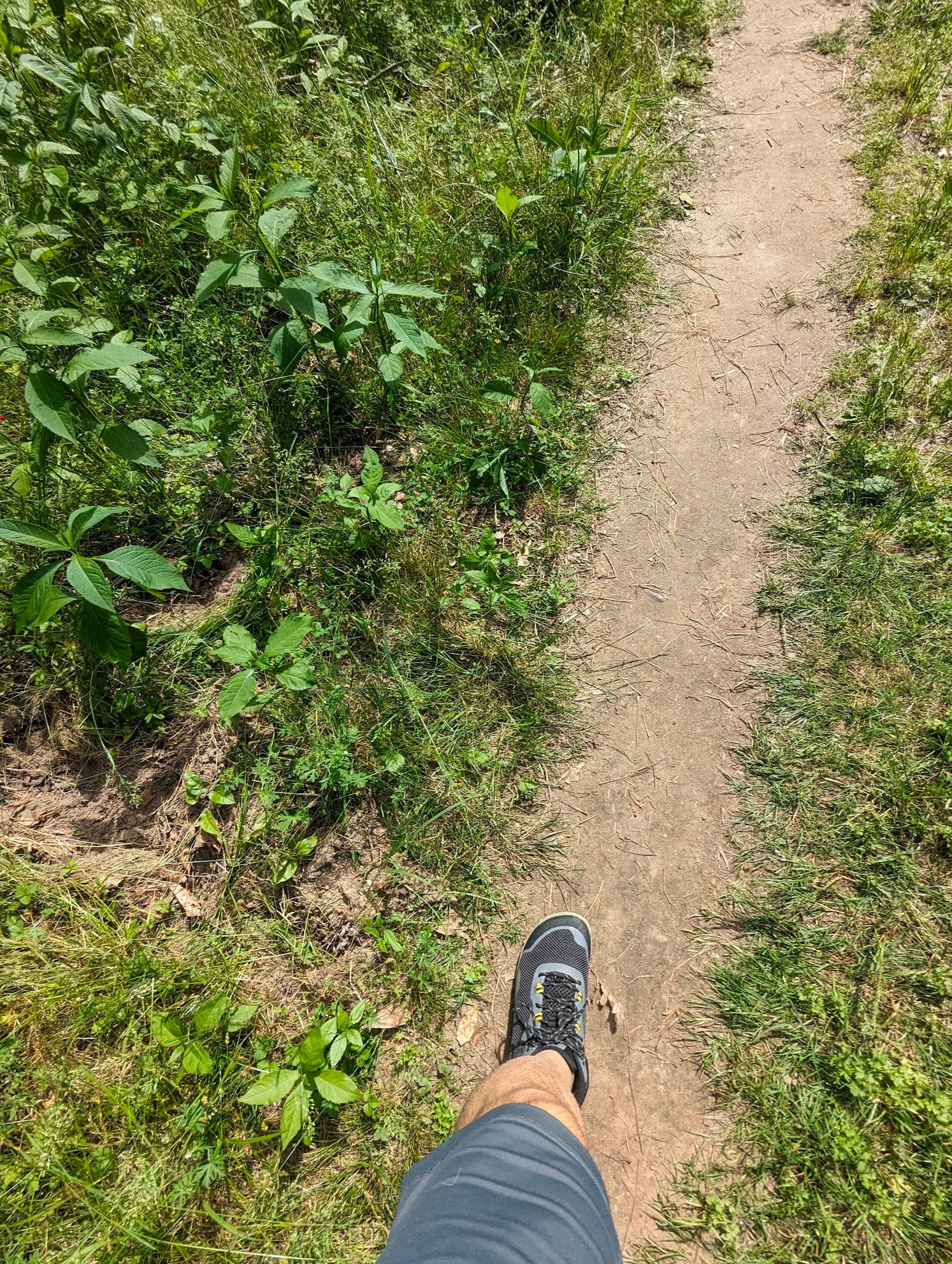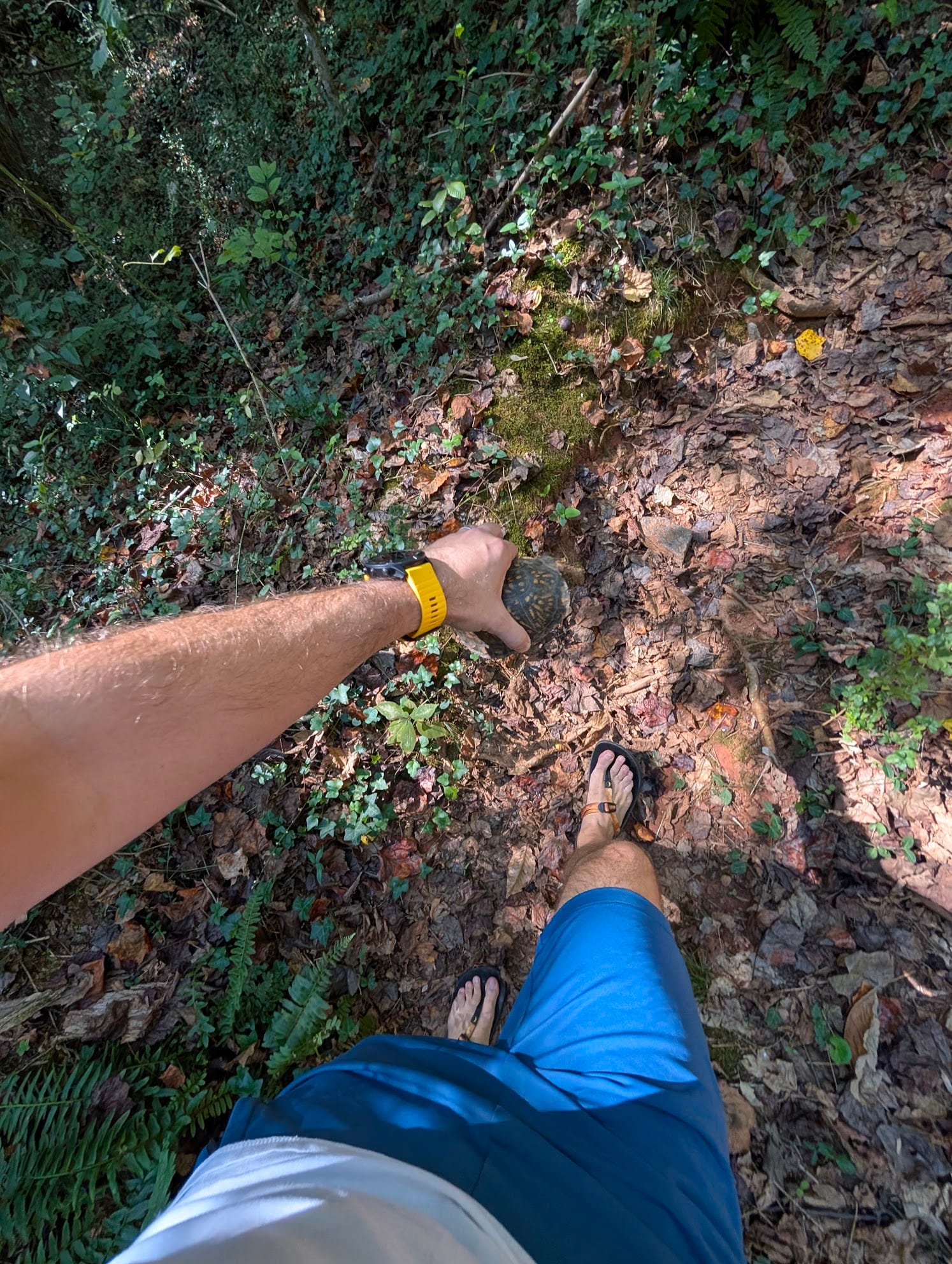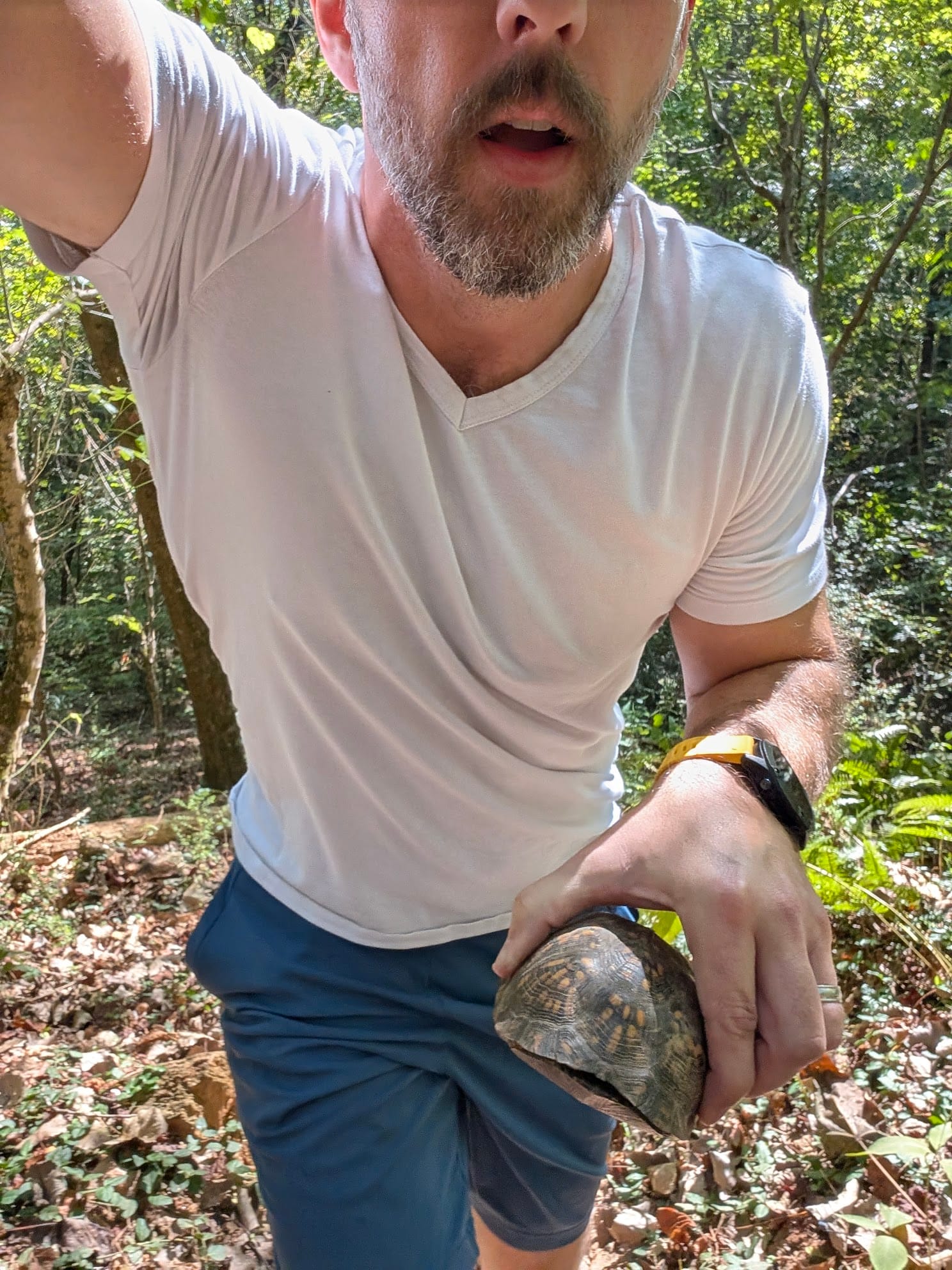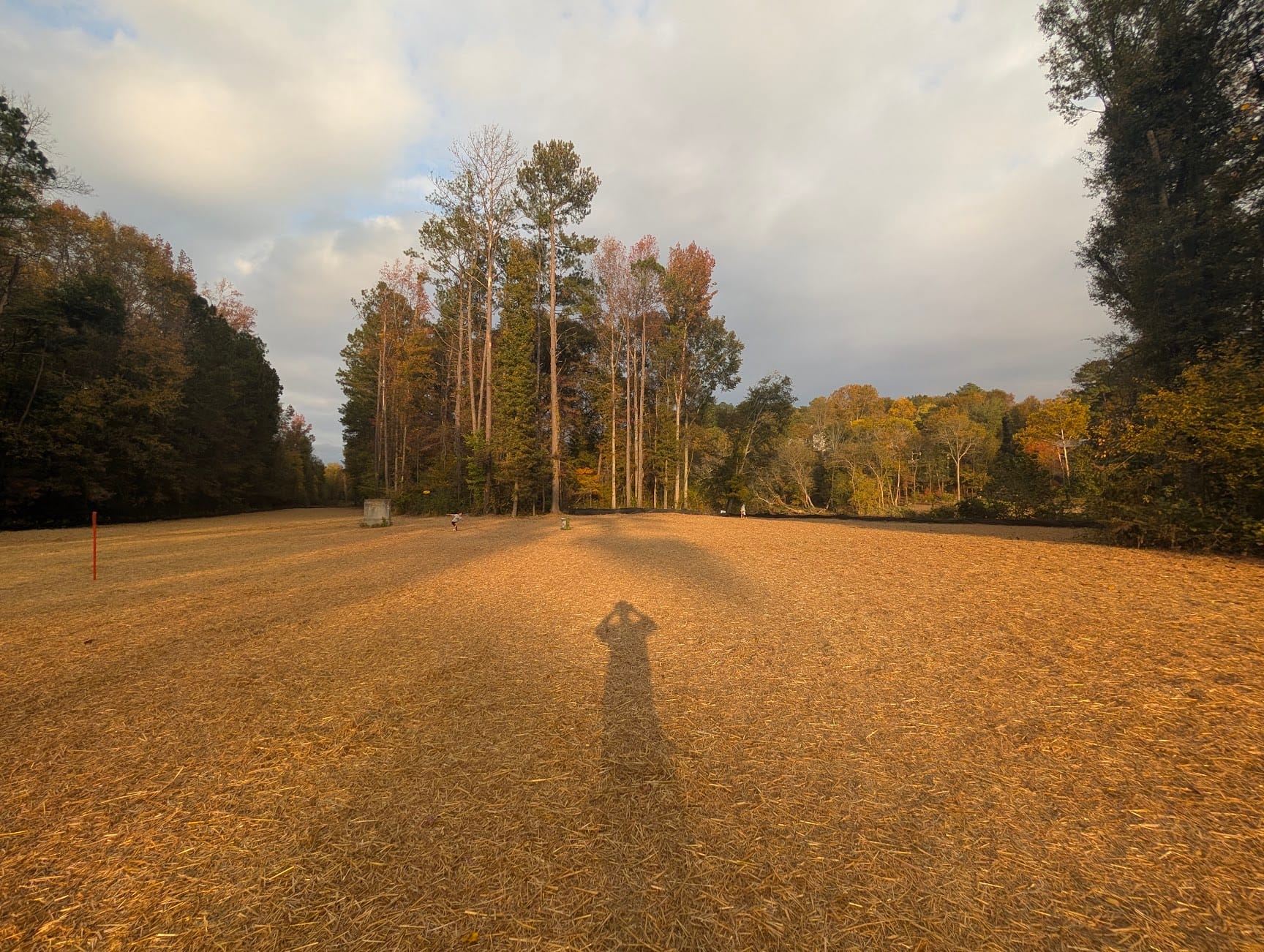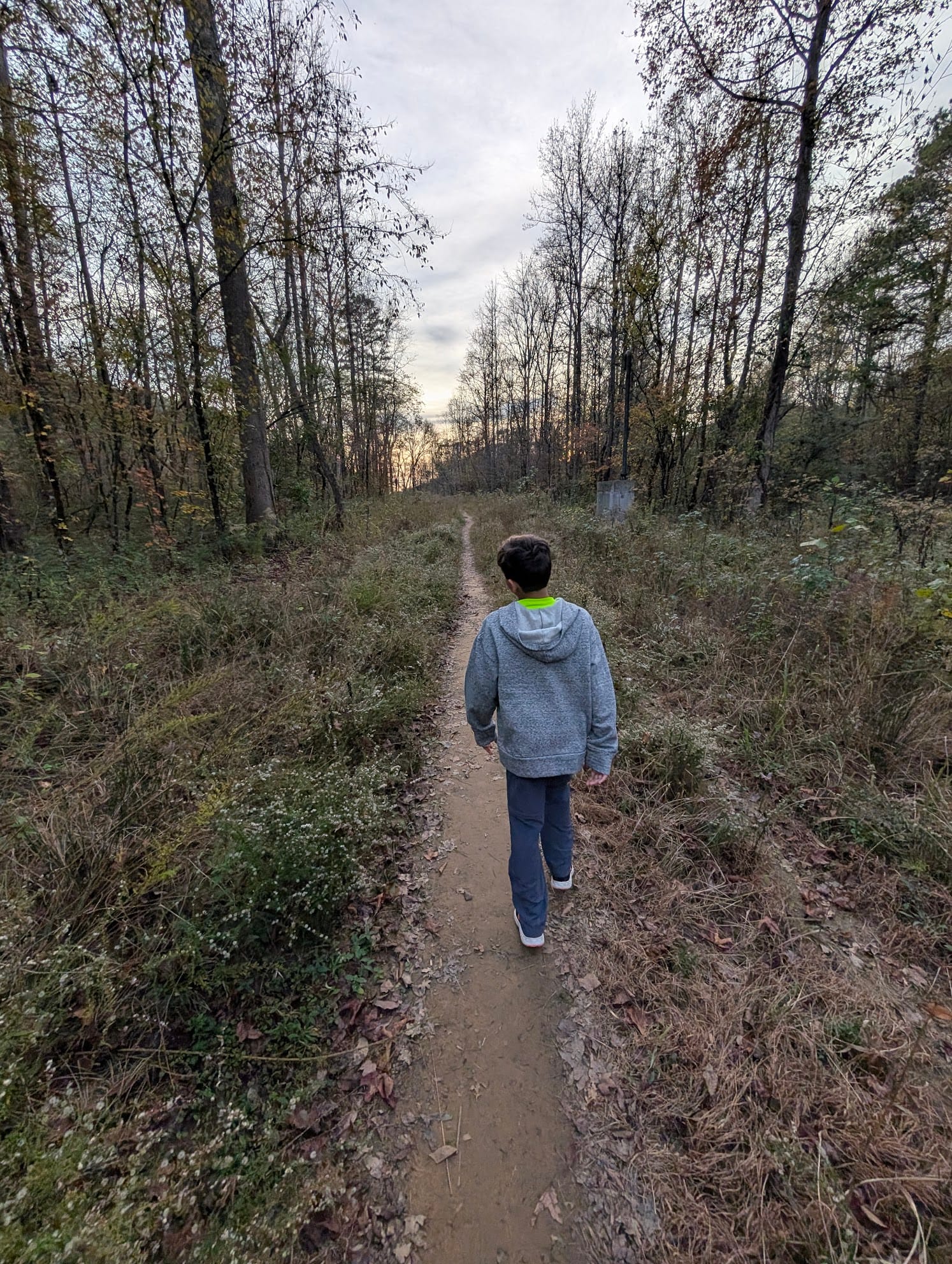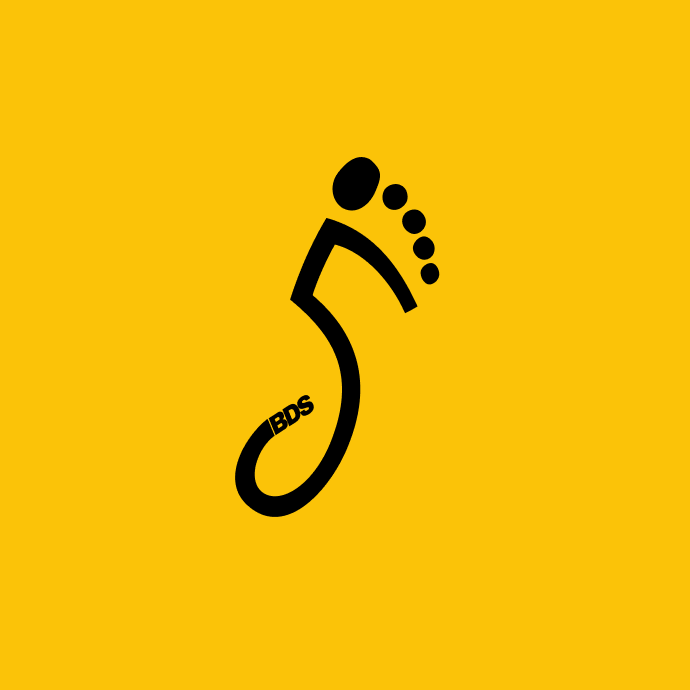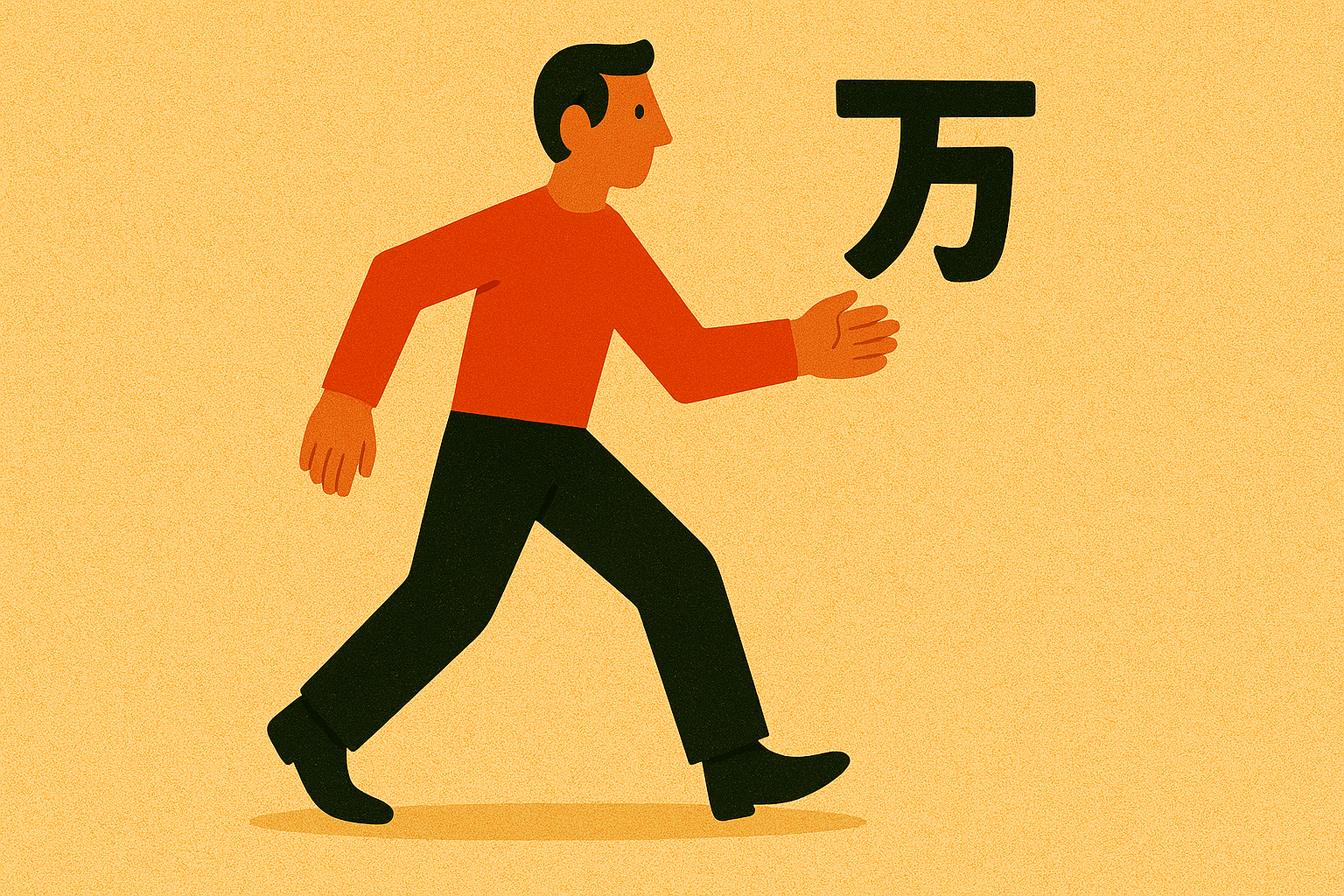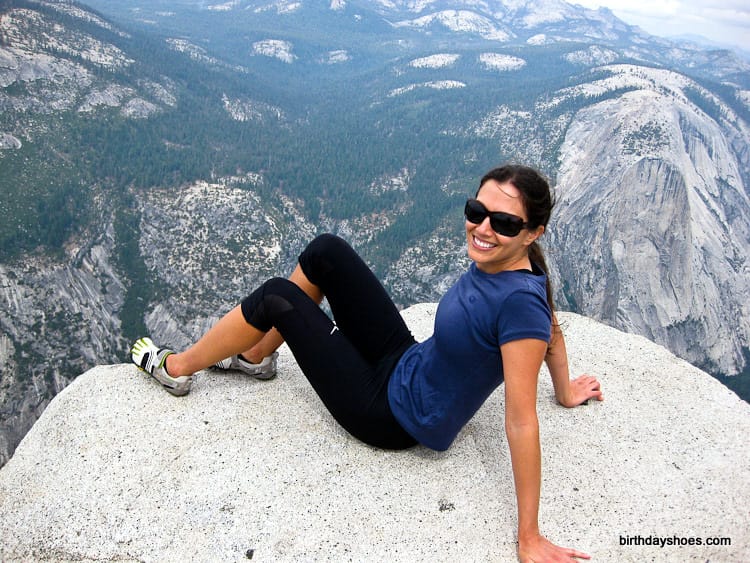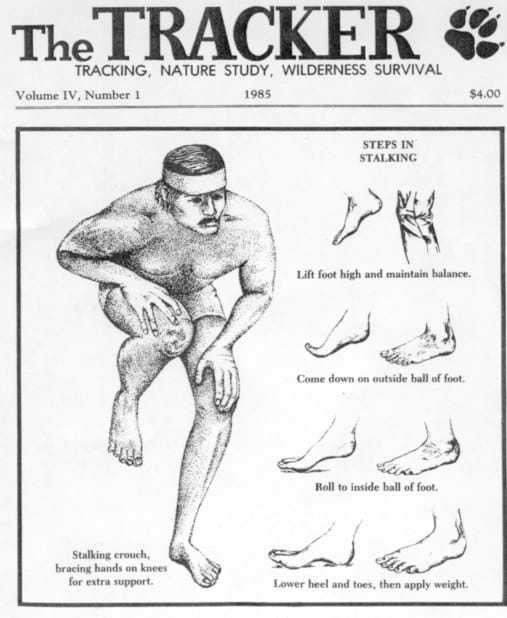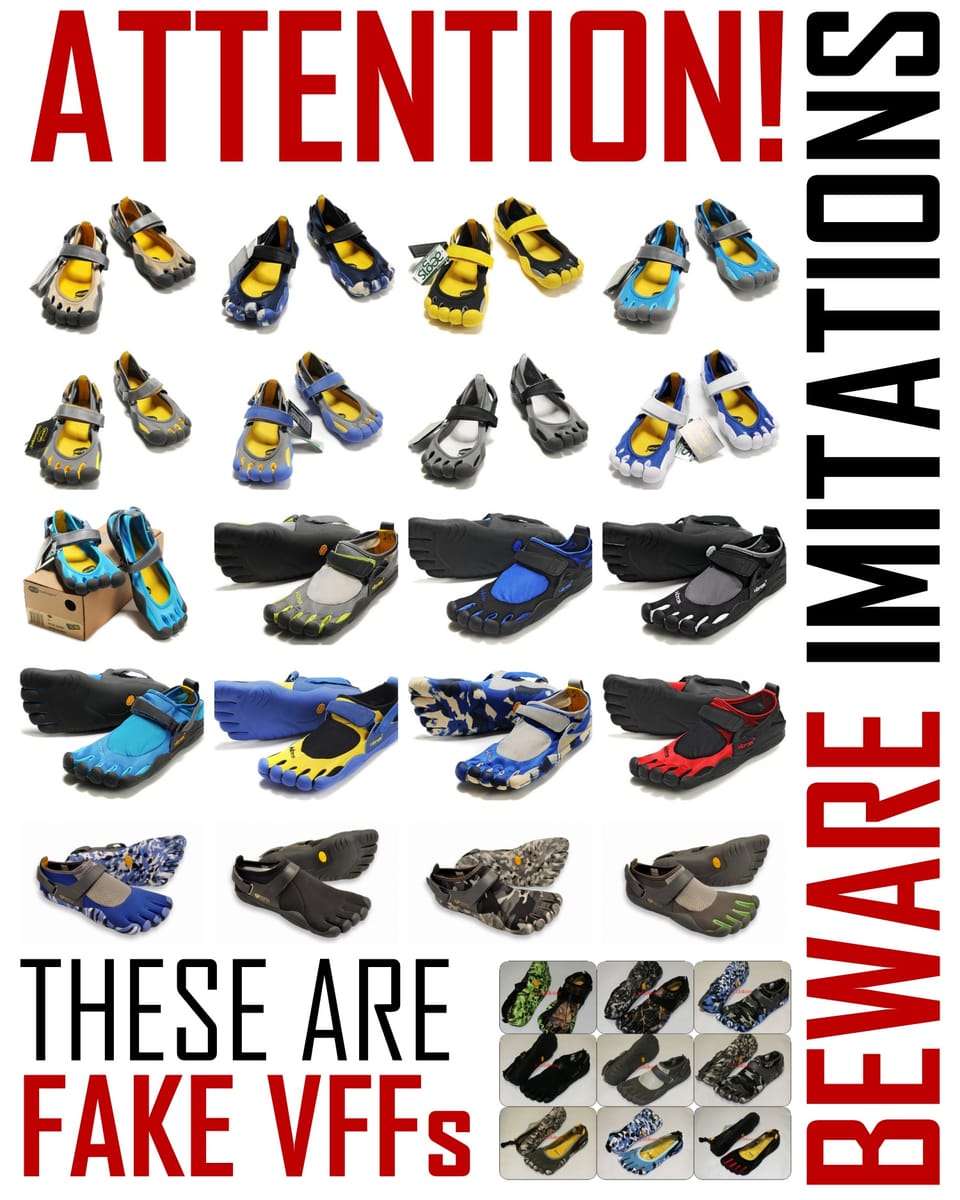5 million steps
How I took 13,699 steps a day and more than 5,000,000 steps in a year to improve my health, change my life, and even learn to run again. The failures — and success — of pursuing a wholly arbitrary goal.
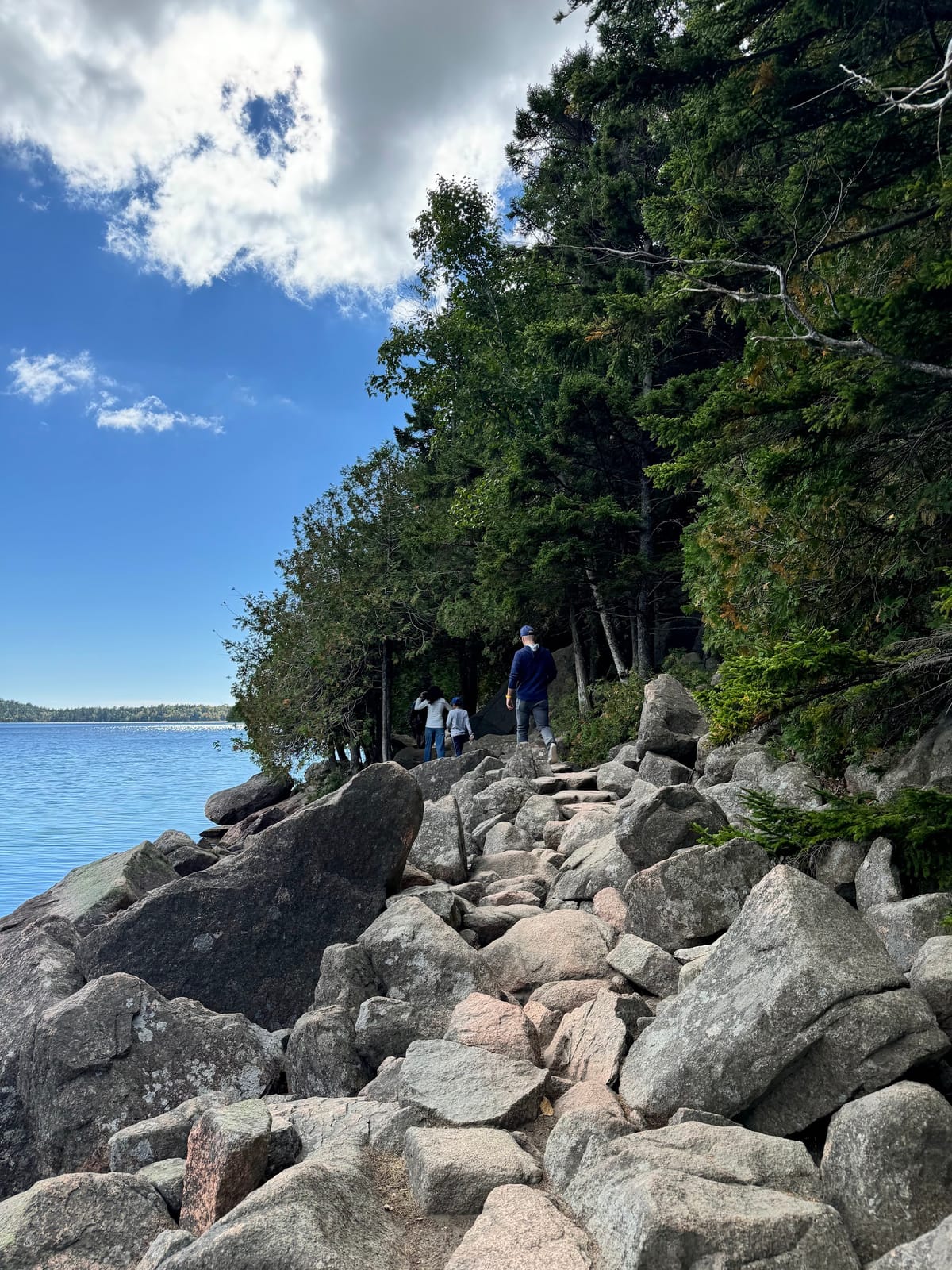
In January 2023 I set a goal to take more than 5 million steps within a year's time. Forty-two years old, a working dad of three kids with an even busier working mom ... achieving this goal would require me to reconfigure my day-to-day life. It meant making time to move more, fitting cardiovascular exercise into an overly busy schedule, and finding motivation even when I didn't want to — even in the face of surprise injuries.
Getting to 5 million steps in a year's time wouldn't be easy, but it was possible. And I'm happy to say that not quite two years later, I achieved my goal — in September 2024 — and I've kept on hitting it every day since.
Today I'm sharing the story of how I achieved this goal, one day at a time. I know it's not climbing Mount Everest. Nor is it training for a marathon — much less an ultramarathon. But it is a story about pursuing a challenging goal for me: Taking five million steps in the course of a year.
You already know the end of the story, yet the journey is what matters most — a reason keep going. Will you take a walk with me?
I. The journey of 1,000 miles begins with a single step
Like any journey, mine begins in a comfortable place. I was 42 years old. I felt healthy — stronger than most men my age. With an executive-level working wife, three kids across every kind of school and activity, and a demanding day-job, I had all the reason to let sleeping dogs lie.
Why mess up a good thing? Why try for improving my health?
I can't run.
Over the years operating BirthdayShoes, folks assume I'm a runner, but it's never been so. I started this site in 2009 after I got on the Paleo bandwagon. Then, led by Mark Sisson, I was introduced to FiveFingers for sprinting. The concept made sense, and I was sold. I got my own pair, loved them, wrote about them, and in April 2009 BirthdayShoes.com was born — but not born to be about running.
This was despite loving to run as a kid. I'd play backyard football growing up in holy land of the sport, Tuscaloosa, Alabama. I'd sprint. I'd race. I loved to go fast.
But as an adult, outside of short sprints, running any distance hurt. Even the slightest amount of running, whether in cushioned shoes or minimalist, and my knees would start hurting. I'd soon have to stop. Running fully barefoot, on asphalt, seemed to help (forcing me to be even softer in how I landed), but becoming a runner didn't look like it was in the cards.
I lifted weights instead and kept that up for years. A typical week might look like:
- Deadlift and weighted chin-ups on Mondays.
- Benchpress, overhead press, and rows on Wednesdays.
- Squats and more chins on Fridays.
- ... Lots of variations over the years, always around major lifts.
I got stronger and felt good. Being strong and lean, I told myself it was enough. I could figure out cardio some other day. But as the years went by, the cardio never happened.
No, I never made it happen.
I can't run, but I can move.
Sometime after hitting my forties, I started thinking more about my heart. Maybe it was going through the pandemic. Maybe it was my technologically advanced (and fully underused) Garmin fenix 6X watch. It was subtly telling me to I be better. Signals I was getting included:
My sleep wasn't all that great ...
My VO2 max was more min ...
My RHR seemed high ...
My HRV was "low" ...
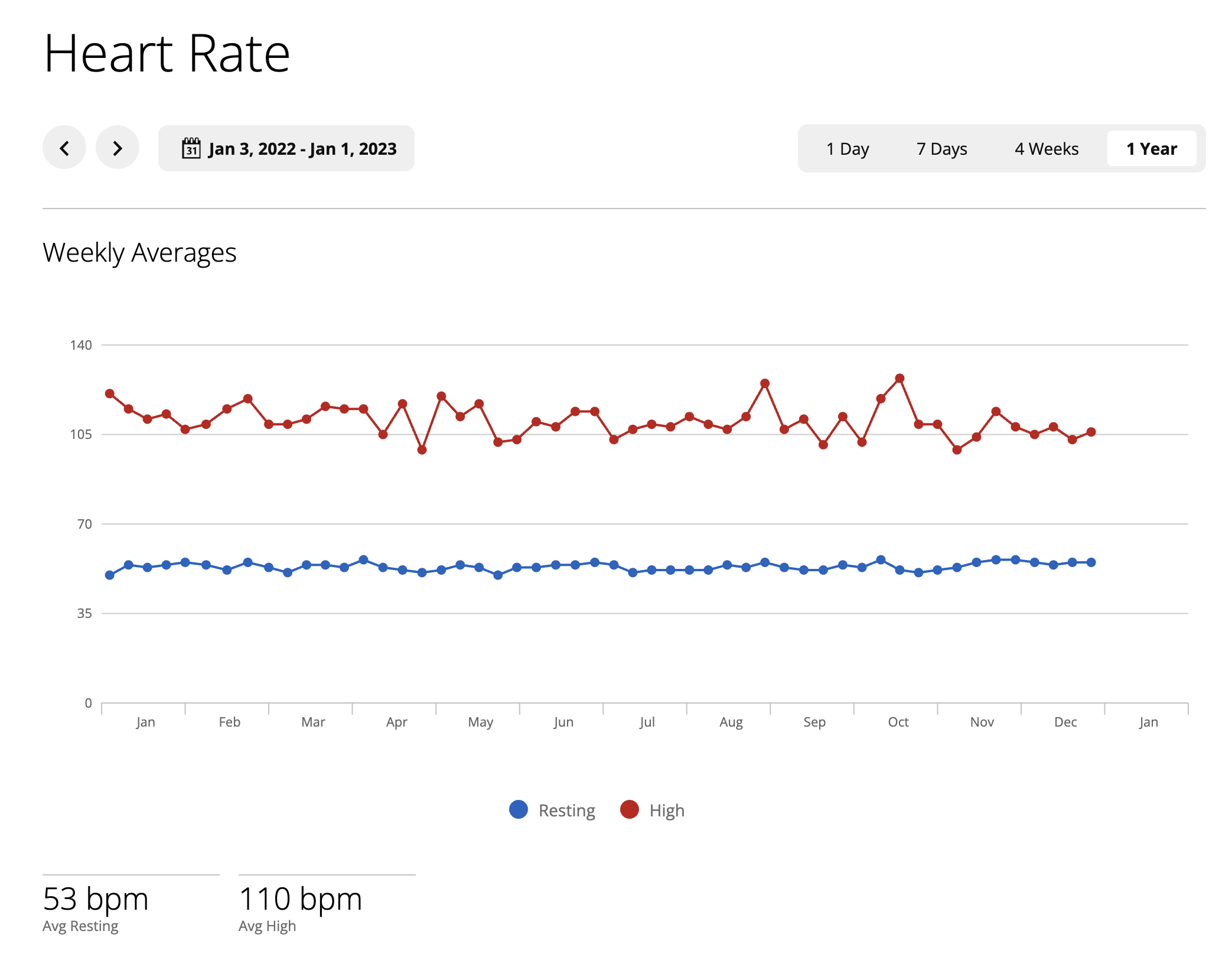
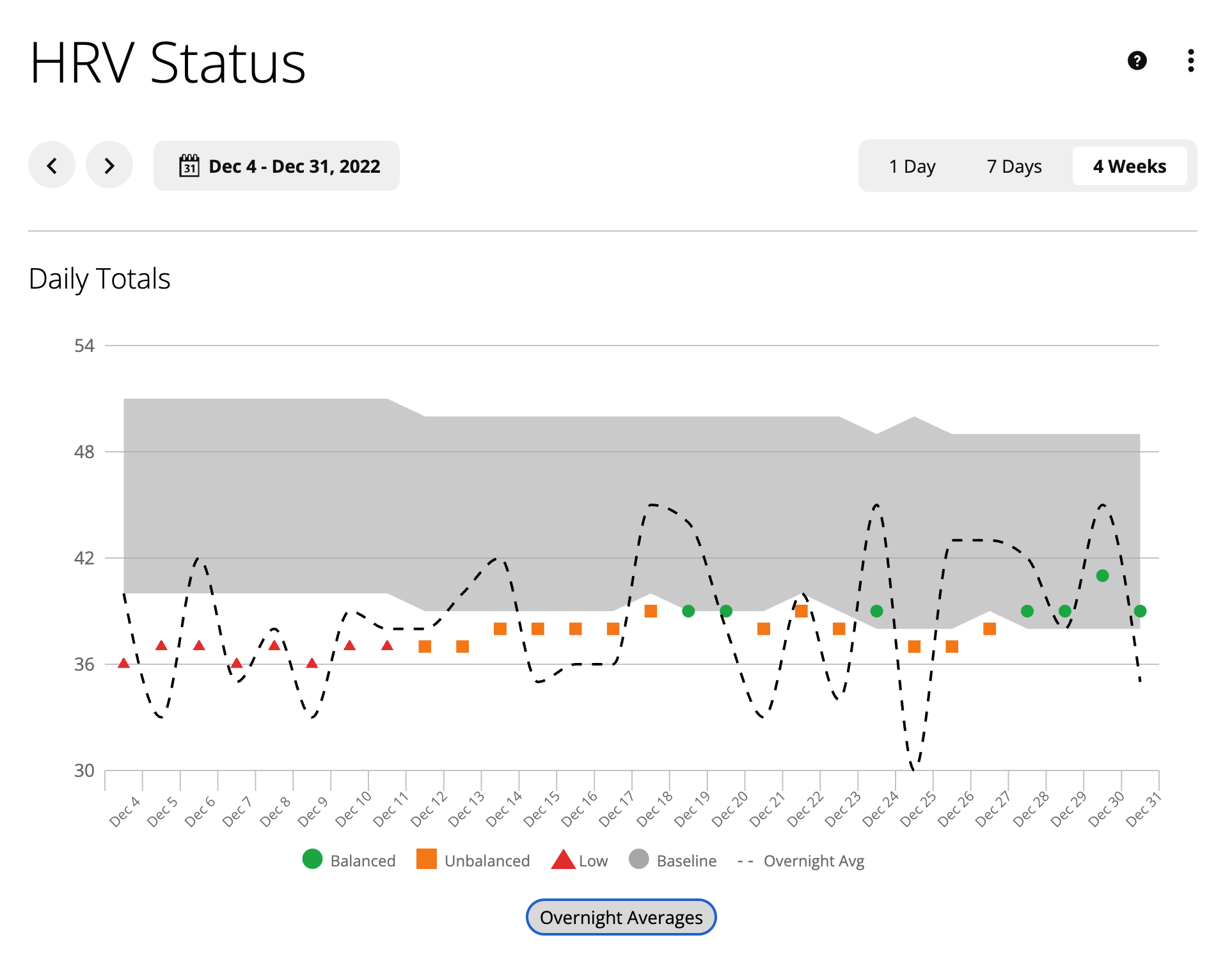
A look at my full-year Garmin Connect heart rate data for 2022 (left) as well as my HRV Status for December 2022 (right). My RHR was 53 bpm and my average high heart rate was 110 bpm. My last month of 2022 at work was particularly stressful.
Maybe it was because while I kept going through the motions — the sets and the reps — of weight-training, I didn't feel as robust anymore. How could I be all that healthy when, outside of a few intense sets a few times a week, I spent my time staring at or swiping screens and keyboards? Something was off. Meanwhile, a friend of mine kept talking about the benefits of Zone 2 exercise, talking up work done by Howard Luks. I was intrigued. What was I missing?
I couldn't shake the feeling. I got to thinking: I need more movement in my life.
So I chose to act.
A new year was arriving, 2023, and what better time to start? The time was now. Besides, so what if I couldn't run — I could walk. I could even use an incline on our dusty treadmill to get my heart rate into Zone 2, whatever that was.
Come January 2023, I went all in. I started off walking for an hour at a time every day, targeting an approximate Zone 2 heart rate using the incline of the treadmill for added resistance. Within a few days of these daily, hour-long treadmill walks, I wanted a goal.
Ten thousand steps a day seemed too arbitrary. Besides I was easily hitting 10,000 steps with my current routine. I did the math and saw that I could achieve 5,000,000 steps over the course of a year by walking 13,699 steps per day. It would take some work, but five million in a year was achievable, even for me.
I configured a step goal of 13,700 steps on my Garmin and got to work.
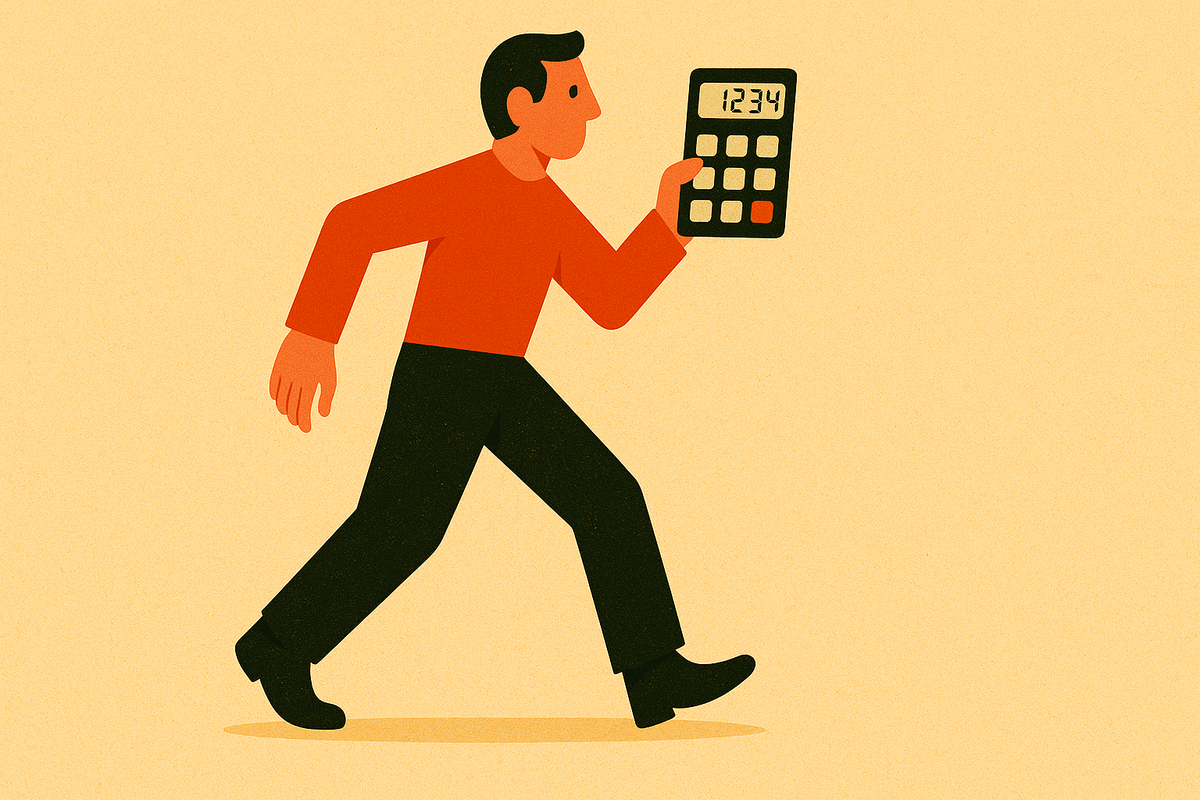
Set your own annual goal and calculate your daily, weekly, and monthly step goals. Use this free and easy-to-use calculator and grab the Google Spreadsheet. Get all you need to get started on your movement journey.
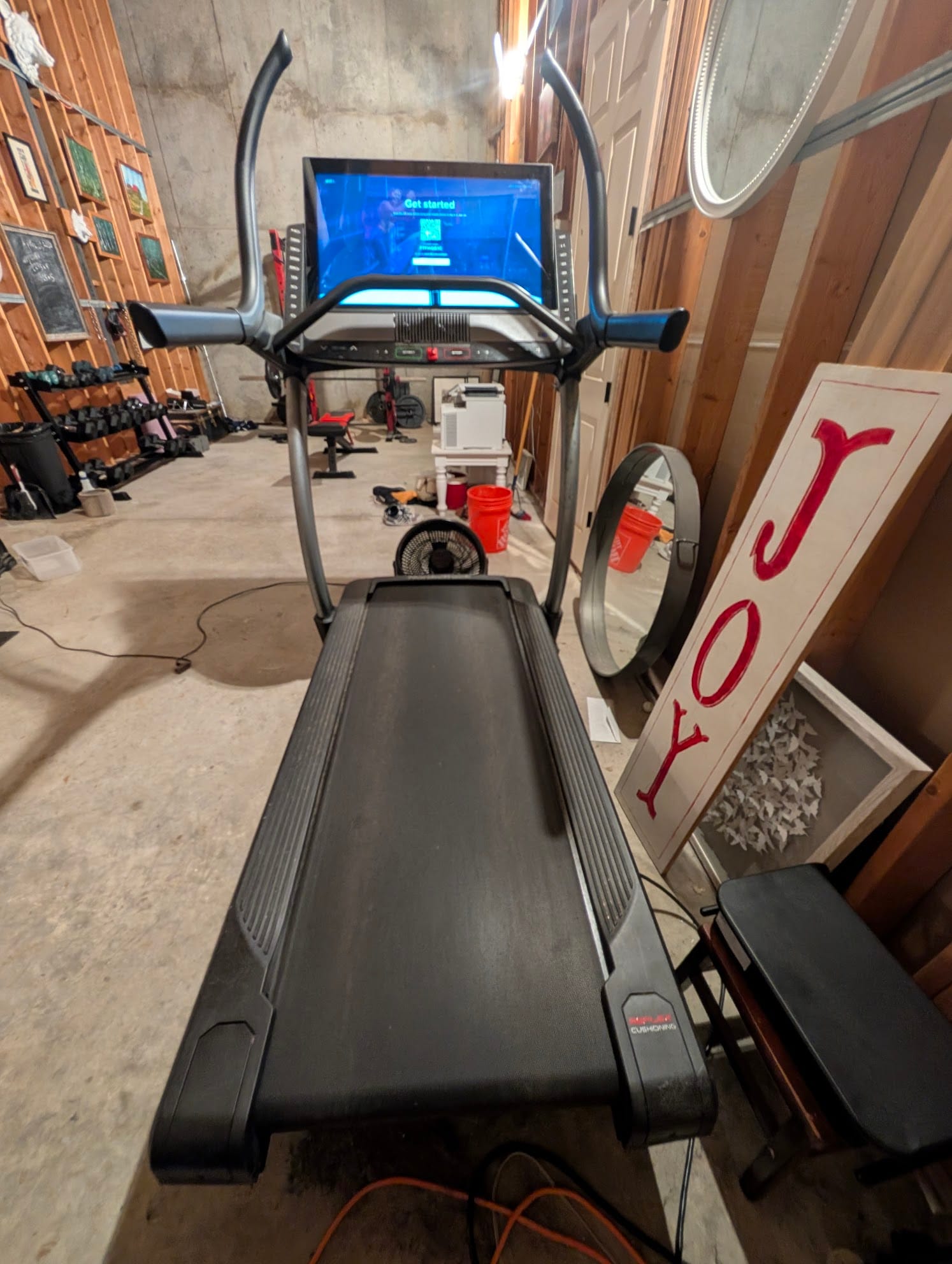
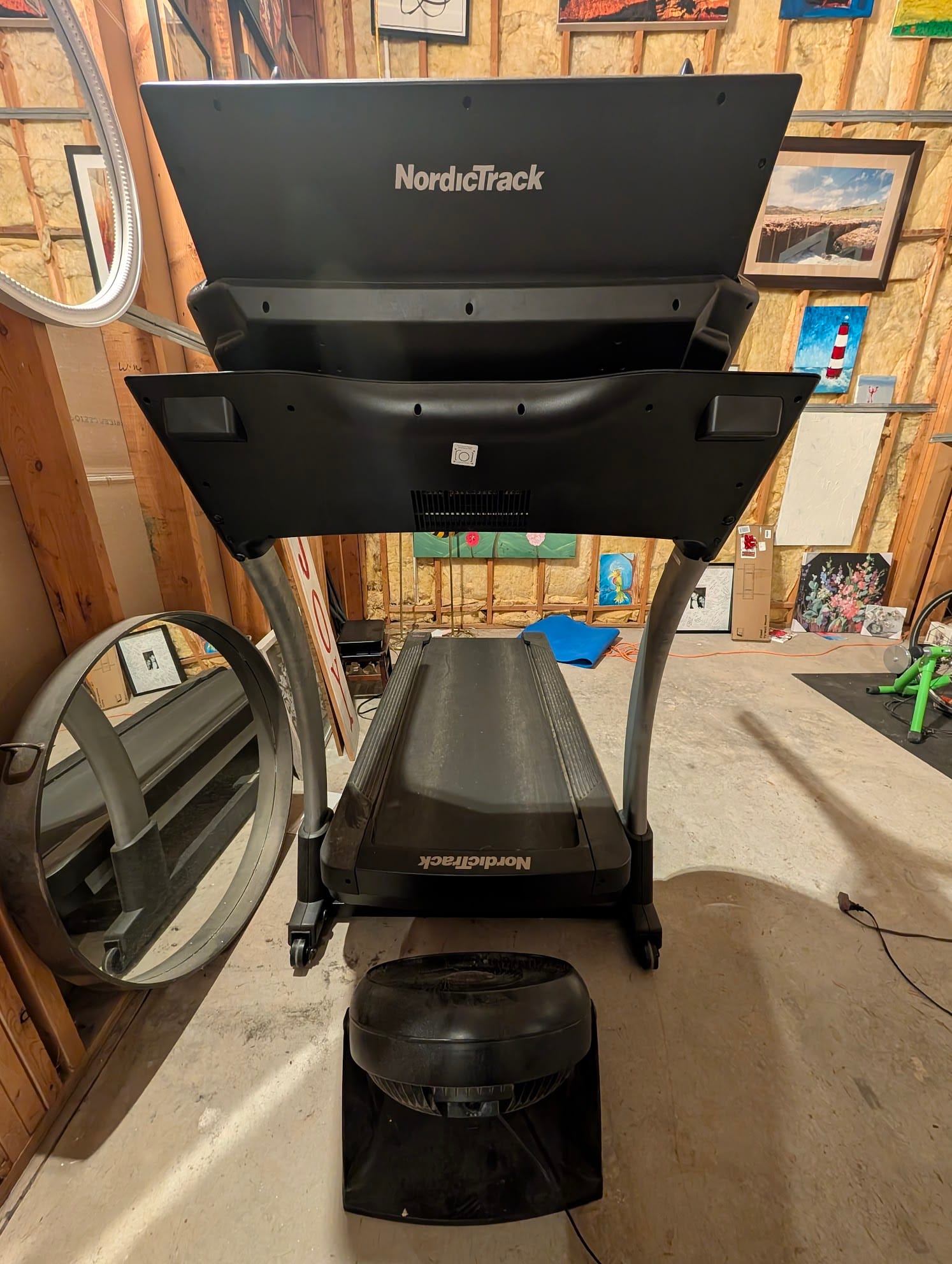
Over the last nearly 30 months I have spent hours and hours on this machine. It's a NordicTrack x32i, picked up for the giant screen and massive incline possibilities. We don't use it for iFit and I went to lengths to jailbreak it two years ago to make Netflix available. I don't really use this either because Android is underpowered on this hardware. It requires recalibration too often, and if you look into reviews, people have all sorts of problems with this thing. That said, it does what we need it to do. I'm no treadmill expert, but I will say the x32i is so much more comfortable to walk — or run — on than your typical treadmill at, for example, a hotel.
Starting strong ... and falling behind
For context, when I began this adventure, my daily step count for the prior year (2022) was 6,255 steps/day on average, not quite 2.3 million for the entire year. To hit 5 million steps in a year, I would need to double my daily movement and then some.

I found in that treadmill an "easy-button" to support my routine. By hopping on first thing in the morning, right after sending my son off on the bus, I could get 3–4 inclined miles logged, about 8,000 steps. And most all of this walking was in Zone 2. Not surprisingly, that first month of January I was on track to reach my goal, hitting 13,800 steps/day, on average.
February, March, April, and May all came and went. I was five months in and tracking to my goal of 5 million. For these early months, most of my time was walking was in "Zone 2," which for me (and at this time) suggested a range of 110–127 heart beats per minute (bpm).
Humming along, I wasn't ready for the summer to mess everything up. My kids were suddenly off their school day routine, and without my young son's persistent assistance pulling me out of bed every morning close to 6AM, my routine fell apart. Add on a couple of vacations, not to mention speed running the self-publication of a book, and suddenly a missed day became two or three.

I missed my June goal by nearly 48K steps.
Then I missed the July goal by 137K steps.
August? Missed by 242K steps!
Come September, I was now more than month's worth of steps behind. Thus, even as the school year restarted and morning routines kicked back in, I was too far behind to catch up. There would be no comeback story for 2023. But I didn't give up on my goal, not completely. And with school back in session, my daily movement routine kicked back into gear.
I kept on walking.
As 2023 closed out I looked back at the year's work, I had reached 4,359,563 steps. This was nearly double the number of steps I took in 2022. I'd seen many benefits along the way (more on this below), and I felt emboldened by the changes I'd made. I felt pulled to keep going. I knew I was onto something.
So I called 2023 a win. I could still reach my goal if I just kept going.
I DID NOT hit my goal of 5M steps in 2023.
— Justin Owings (@justinowings) December 31, 2023
I DID about double my steps from 2022.
Calling that a win. pic.twitter.com/ZRAEAtGyDR
As 2024 began, I got into a groove fast. Before long and more than a third of the way into the year, I had achieved a 100+ day streak of reaching 13,700+ steps. Sustaining this streak meant hitting the goal even on atypical days and weeks — like on a spring break trip to Puerto Rico or a weekend spent traveling for soccer with my oldest kid. When these breaks from the routine came along now, I felt an inner drive to push myself. I wanted to break the inertia, overcome excuses, and do what I had to do.
Chasing this arbitrary, ridiculous goal and not giving up forced me to practice discipline. I knew I could always find ways to move more, and I did just that.

This time when summer 2024 hit and school got out, I was ready. I was well on my way to five million steps, and I made sure to back down.
I kept on moving.
And did I mention? Somewhere along the way I even incorporated running into the mix. Yes, running. I could run — and I could run pain-free too! (More on running below.)
Stumbling toward the finish line
For each day that I hit my step goal over the summer of 2024, I swapped out one of my "off," failed days from the summer of 2023 and swapped in a successful day of more than 13,700 steps.
My rolling total started growing closer and closer to five million, and I was building up momentum. Nothing could stop me, now. Soon I realized I could even hit my goal much earlier than December. In fact, by the time August came, the 5,000,000 mark looked only weeks away. So it came to be that on Sunday, September 8, 2024, I knew my day had come. My 52-week step total would roll over to hit 5,000,000 today.
That Sunday afternoon was busy, but I had gotten my weekly responsibilities done — meal planning, grocery shopping, etc. — and I had window enough for a hike into the woods. What better way to reach a goal I'd set nearly 20 months prior than outside in nature!
I asked my (then) 12-year-old daughter if she wanted to go with me, and she said, "Yes." So we ventured out to conquer a 3–4 mile hike that started right in our backyard, taking us well into the Chattahoochee Nature Reserve.
Importantly, the beginning of this hike starts in our front yard, but quickly descends into the forest. It is very steep. In 0.05 miles, just as you enter the woods, the path drops 67 vertical feet (about a 25% grade). Because the leaves had already begun to fall, I told my middle child to watch her step — "Be careful." No injuries. Not today!
I led the way down, down, down, and you can guess what happened next.
Not 30 seconds after my warning, I put my right foot down at a bad angle, and my beefy-soled Altra Lone Peak shoes stayed put while my foot slid laterally out and over the soles. This stretched the tendons around my ankle beyond the point where they could stabilize the joint. There was an audible "pop," and I instantly felt pain. My ankle had rolled hard.
Oh, no.
But ... Yes. On the day I was to finally hit my goal, after 20 months of effort, I sprained my ankle for the first time in more than twenty years. The pain was sharp, and there was no way I could continue on the trail. My daughter and I turned around and went right back inside.
Now, what?
I couldn't just give up. Yes, the pain was sharp, but I could still walk. I could still hit my goal. I took a deep breath, hobbled down to the basement, and got on that treadmill. Don't laugh, but I thought of David Goggins. I thought of all the work I'd done, and I kept on walking. Before long, I got enough steps in that a little later that Sunday, I reached my goal at last.
In 52 weeks, I reached 5 million steps.
Decided to go for 5,000,000 steps in a year in January 2023.
— Justin Owings (@justinowings) September 8, 2024
Summer 2023 took me off track.
Mostly got back to it in winter.
Went at it in 2024.
Today, hit 5M steps on a rolling 52-week basis.
13.7K/day min.
Lots of walking. Lots of running.
(And rolled my ankle today.) pic.twitter.com/5ekciprHR7
Not long after marking the occasion with the above post on 𝕏, I began doing what I should have done many hours before: I iced and elevated my ankle.
That's when the real pain began. I don't know why! But the swelling had gotten bad, and with it, my high tolerance for pain gave way to fear that I'd broken my ankle.
My (loving, patient) wife took me to urgent care.

After explaining what happened to the staff, admitting that I'd walked a few thousand steps after rolling my ankle — "Yes, I know this was dumb, but I just had to do it" — I got the good news. My ankle wasn't broken. It was just tissue damage.
I went home and took it easy for the next week. And I refused to let my rolling total fall back below five million.
A few short weeks later I healed back up, good as new. And as 2024 came to a close, I just kept moving. I have kept going every day and week since. As of the time of this writing, my current 52-week rolling total of steps is over 5.2 million.

After all this — logging hundreds of hours of walking (and running!), was it worth it? What follows is what resulted. And if you stick with me, I'll share what I learned too.
II. Results: How all those steps added up
So what was the impact of all this extra movement? I'll start with the measurable results, as captured imperfectly by my Garmin fenix 6X watch, and then also share the effect on my sleep and my weight.

Metrics: Heart rate, HRV, and VO2 max
Highest level, these were the measurable benefits:
- Lowered resting heart rate (RHR)
- Improved heart rate variability (HRV)
- Improved VO2 max
Check the data:
1. Resting heart rate
As seen above, my resting heart rate went from 53 to 49 — that's close to a 10% decrease. I could look up studies that say, "This is good," or lean on good ol' intuition. I choose the latter: This must be good. (A cursory search for research suggests I'm right. Then again, the Internet is a confirmation bias machine.)
Qualitatively speaking, I never felt unwell when my resting heart rate was 53 (from that 2022 average). However, I do feel better on the daily, and I feel better too knowing that my heart works less when I'm not doing much.
I hear of people who have RHRs in the 30s. I don't know if my heart will ever get close to that efficient — certainly not without significantly more work. I'm not stressing about it.
2. Heart rate variability (HRV)
Over the years I've heard how heart rate variability (HRV) is this fantastic metric for gauging your health. HRV is a good thing — you don't want your heart to beat (rigidly) like a metronome so much as be able to adapt (flexibly) from beat to beat. Like most everything, I imagine there's nuance to the application of this concept — too much rigidity is bad and too much flexibility is also not good.
HRV on the Garmin, according to Garmin, is determined while you're sleeping. Regardless of benchmarks I found online, I'm not confident I know what a "good" HRV is. What I can tell you is that my HRV increased over the course of the last 2+ years. I can also tell you that:
- Getting sick tanks your HRV. I came down with the flu over Thanksgiving 2023, and my overnight HRV plummeted (see chart below)
- Alcohol is not your heart's friend. Drink and watch your heart rate rise and your HRV fall
- Stress hurts your HRV, be it at work or in your home
Like so many things, the data backs up your gut. For me, the physical wellness from more movement seems to have lowered my stress and an improved HRV marks that feeling.
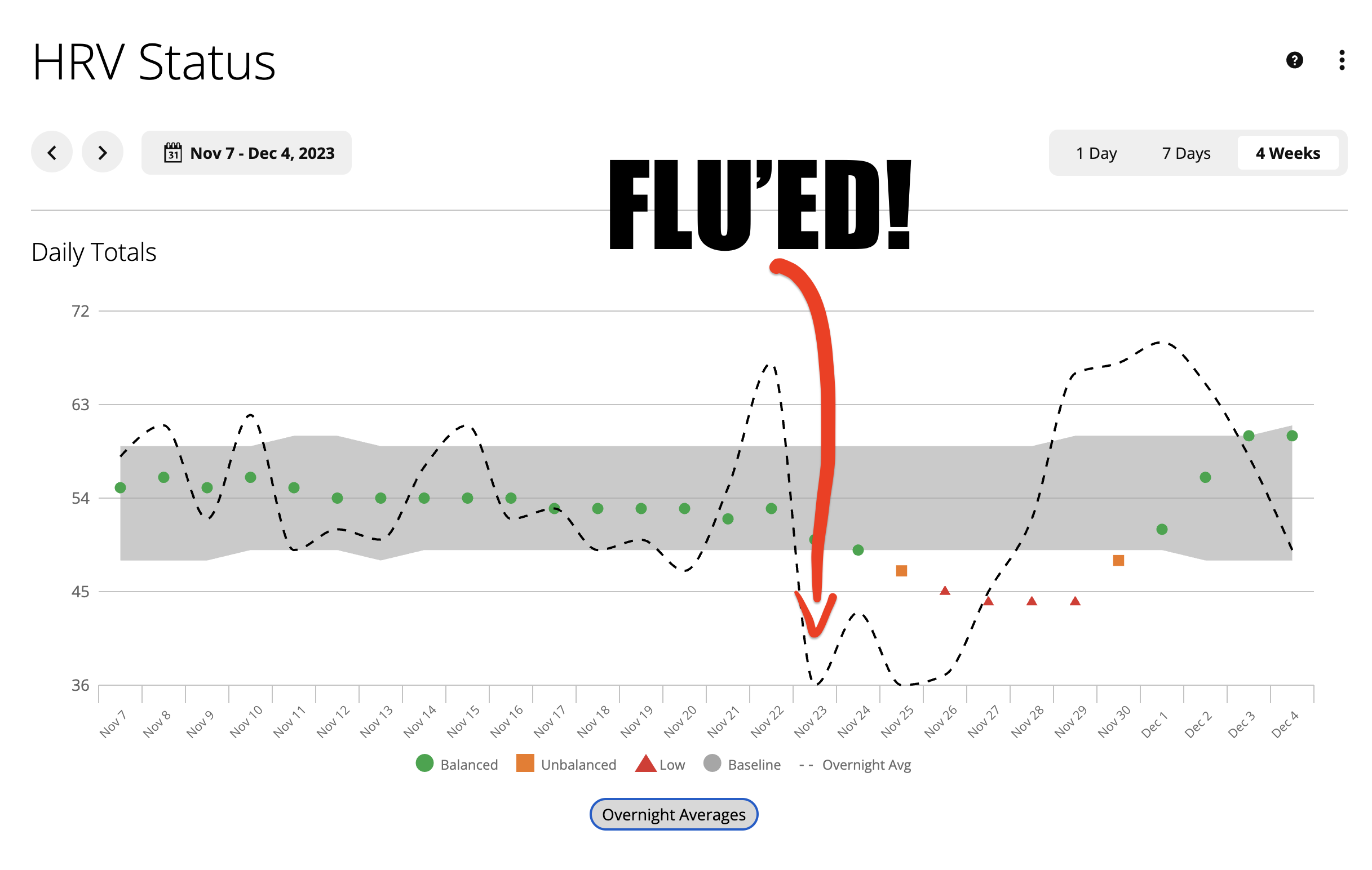
3. VO2 maxxxing
My VO2 max when I began all this wasn't great — at least not according to most any benchmarks for someone my age (early-to-mid 40s).
In general, similar to HRV, a higher VO2 max is "better." Mine, even as imperfectly calculated by Garmin, improved significantly over the course of chasing 5 million steps — from the upper 30s to the mid 40s.
Combined with an improved heart rate, I experience improved VO2 max as not feeling nearly as winded walking up steep hills or being able to run at the same pace at a lower heart rate.
Also, when I injected more and more running into my routine, that's when I started seeing the most improvement in my VO2 max. All said, my VO2 max went up, and I'll take the "W."
(So I understand the only way to measure VO2 max accurately is in a lab. I took my Garmin's measurement as good enough.)
Weight loss
There was no perceivable weight loss from all this added movement. Why not?
At the beginning of this in early 2023, I weighed 190–195 lbs. and despite adding an extra 3–4 miles of moving into my daily routine, my weight didn't much change at all.
If you do the math on my added movement for this project, you can estimate how many "extra" calories I was burning because of it. I lean on the rule of thumb that every mile you move, you burn your weight in kilograms as calories. For me at 190 pounds, 86 kilograms, every mile moved (walked or ran) is 86 calories.
Before I added all this extra movement into my day, I was averaging 3.2 miles a day (2.3M steps, 365 days, 2K steps/mile). At a run-rate of 5 million steps in a year, my daily movement increased by another 3.7 miles.
Run the numbers, and that's about 320 extra calories burned every day, more than 2,200 calories per week, 116K calories over a year — enough energy to "burn" 33 lbs. of fat!
So why didn't I lose any weight? Because weight loss doesn't work that way.
As the saying goes, "Abs are made in the kitchen." If you want to lose weight, diet is how you do it. Turns out that increased cardiovascular exercise, while requiring more energy, tends to increase appetite (and food intake) to meet energy needs. That's what the research suggests, anyway, and my n=1, anecdotal experience was no different.
Worth saying: I never felt like I was eating more. On the other hand, I didn't count calories. For that matter, the most interesting observation I can share here is this:
While moving 13,700+ steps a day didn't result in any weight loss or noticeable body recomposition, it did result in me losing any worry over my weight. All that extra movement seemed to keep me weight stable.
That's a significant benefit of adding a chunk of movement to your day.
(Fast-forward to the last three months when I have been dieting a bit, counting calories while taking in more calories as protein — following a version of Leangains — and I have lost about ten pounds. I don't think the extra movement helped much here, but I don't think it hurt either.)
Sleep improvements
If you're like me and don't mind wearing your giant watch to sleep (even as you risk your life when it lights up in your loved one's face), you will receive all kinds of data every morning for your troubles.
I like this data — even though it mostly confirms what I already know intuitively. Getting the data helps me check in with my health. It helps me pay attention.
Normally, I feel good with 6–7 hours of sleep, getting plenty of deep sleep and REM sleep. I can usually score above a "75" on my sleep with as little as six hours (so long as I've not eaten too much before bed or drank alcohol). I think a 75 is good enough for me right now. (Maybe that's another habit to tackle, but for now, I'm willing to trade awake time and sleep time.)
So how did all the extra movement impact my sleep? Well, my sleep score went from 72 in 2022 to 79 and 78 for 2023 and 2024, respectively (averages). My average lowest sleep score went from a terrible 49 in 2022 to an average lowest score of 65 and 64, respectively, for 2023 and 2024.
I could analyze this kind of data further, but the basic conclusion is clear: Incorporating more movement in my day-to-day life improved my sleep.
III. How to move more in marginal time
You can't do something like this without learning a few things. Here are a few of the things I learned along the path to 5 million steps in year.
If by default you move only 4–6K steps per day (like I did), reaching 13.7K+ steps per day takes incremental work. You've got to put topdown pressure to build in extra movement, likely both in a dedicated session as well as in the form of walks, runs, and other behavior changes.
Doing this work during a regular week is easier due to the rhythms and routines of the week. But doing this work on weekends, vacations, trips, and more is another thing entirely. The number one thing I learned I hinted at earlier. You have to have discipline.
Don't allow yourself to make excuses.
With discipline, you learn how to maneuver around constraints. You learn some new tricks too. For me, I found the following four adjustments helped me most to add a lot more movement to my daily life:
1. Make time for movement
This one is obvious: Make time every day to move more. Most often you'll have to do this on your own, but sometimes you can get a friend to come along. (A nice bonus.)
For other busy parents, always running around to practices, after-school, games, and more, I know how easy it is to just sit around at your kid's practice, sitting in your car and swiping your phone. Break the inertia and use this time to go for a walk instead. You will be happier — and healthier — for it. The one thought that's rattled around my head more over the last two years is this:
You should set aside time to move every single day of your life. No excuses.
2. Become an explorer
There's so much to see, not far from where you are right now — be it at home, at work, or in a new place entirely. Go explore! Become a wanderer.
If you're on vacation, sitting around and being lazy is the expectation. Please hear me when I say that's part of why you vacation. Rest. Relax. You don't have to be a masochist about finding ways to move. Often you can build movement into your vacation, bringing along family and friends for a walk, hike, or just to see what you see wherever you are.
If you're on a work trip, explore the hotel, resort, nearby grounds and parks, city, etc., wherever you're at. And if you need to, use that hotel treadmill, even if the room isn't air conditioned and the treadmill is hard as a rock. Have fun with it, like a kid might. See what you can discover.
3. Do the house shuffle
Sometimes you realize your day is winding down, it's late, and you can't do much but walk around the house. This will seem absurd at first, and your wife and kids might will make fun of you for it. But in a pinch just go for it:
Walk around your house. There's no shame in the house shuffle.
Walking around the house for 5–15 minutes you can rack up a thousand steps or more. You can knock out a few hundred steps just brushing your teeth! You can turn it into a game — a game of "clean up" where you end up looking for things to put away.
I learned this trick from my nearly 80-year-old father-in-law. It works.
4. Run
Finally, there's a faster way to get your steps in. You guessed it: Go for a run. That is, if you can ... and surprise, surprise. It turns out I can run, after all.

5. Learn from the pros
There are loads of walking and running enthusiasts who have been where you are — or where I was — trying to figure out how add more movement to your day-to-day life. There's a lot to learn, and if you have an open mind about how to change your life at the daily level to get more movement, you're already on the right track to making that change happen. Find strategies from "the pros" of r/walking in this article:
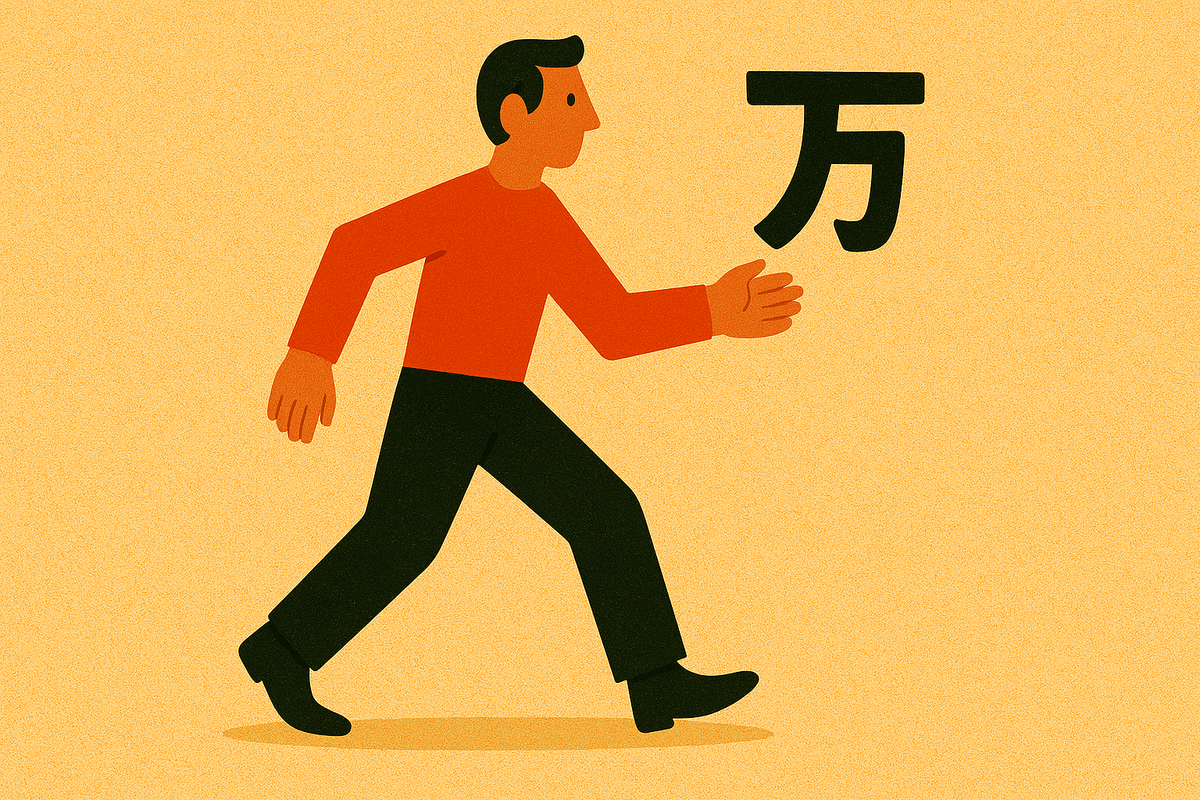
IV. Run, Justin! Run!
You'll recall I was convinced — for some twenty years — that I couldn't run without pain. Well, I don't know what happened here. What I can tell you is this:
Several months into 2023, walking at an incline, doing Zone 2 focused walking, I started trying to run — very, very slowly. I cranked the treadmill up to level 6, which is 10 minutes per mile. I got to jogging ... and I felt totally fine.
What is happening?!
When I started to run, even slowly, I was pretty nervous about the whole thing. Yet each time I tried running again, my knees were fine. Pretty soon I was regularly running 3 miles and then walking 2 over the course of an hour. In time, I'd level up to go faster still, getting to the point where I would run 5 miles on the treadmill in 45 minutes or less.
I could run. I can run. So I did, and I do.
A year into fairly routine running, I'm not looking to race. I'm in no rush to rack up miles or try to run distance. I don't even think of myself as a runner. I'm just happy to take my running journey slowly.
I confess: I run most often on the treadmill. I find something meditative about the monotony. I also wonder if our treadmill helps with impact relative to our neighborhood streets. Speaking of "real" running, when the mood strikes, I'll go trail running out in the woods. I have a fond memory of this run on my 43rd birthday when I ran 4.2 miles in 40:42. I even tumbled down some slate rock on the trail toward the very end of this run. Thankfully, I rolled with the fall, and didn't care at all. I was fine.

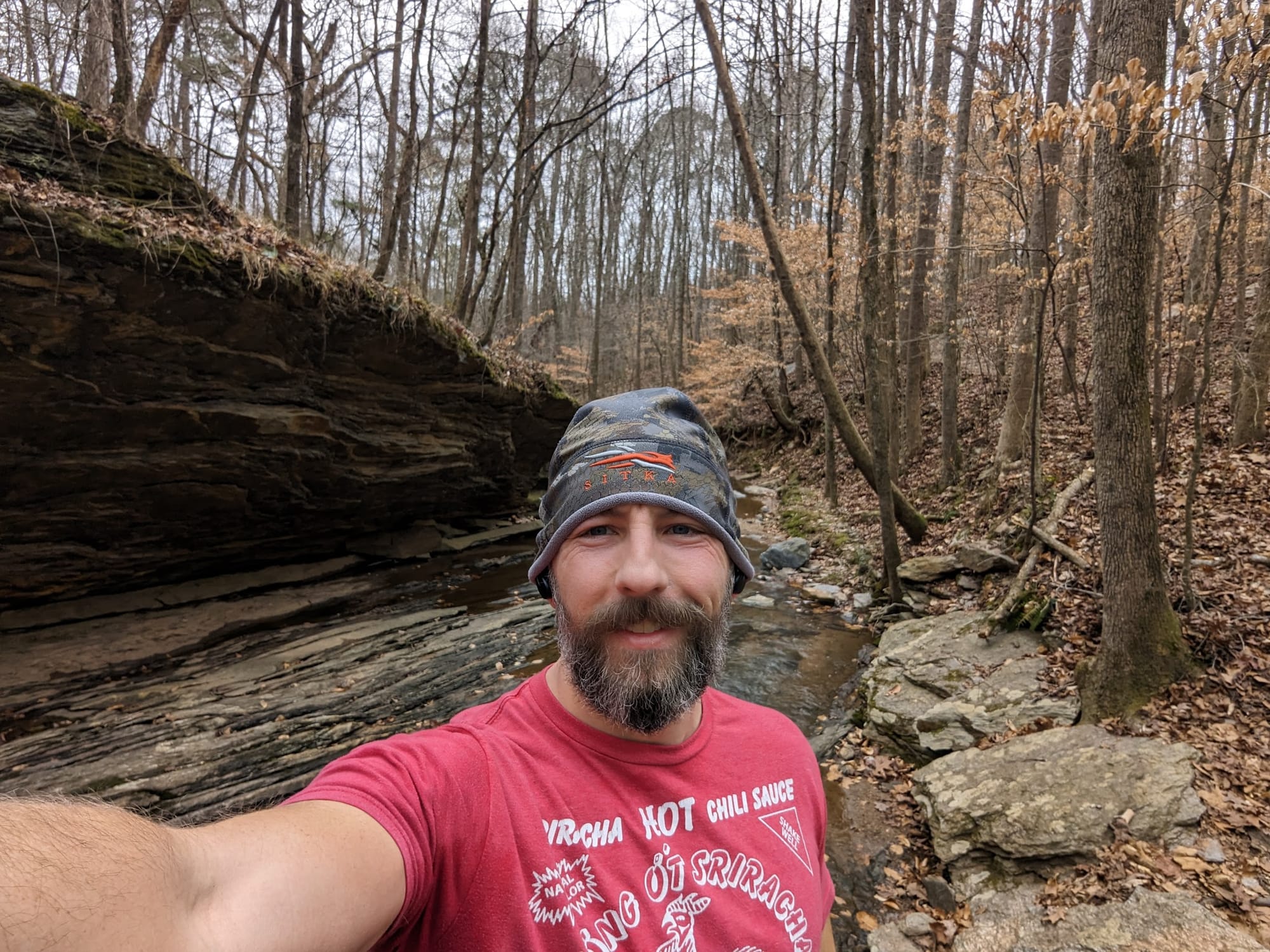
What changed that made it possible for me to run without pain in my knees? I'm not sure. I can only guess that by working into the experience — adding a lot more movement like walking at an incline and then going super slow with running, I gave my body enough time to prepare. Candidly, I have no idea what happened. I'm glad it did.
V. Why do I keep on walkin'?
Now we're to the heart of the matter: Why keep doing something like this? Well, there's the obvious answer and the answer I feel is right.
The obvious answer
I need regular cardiovascular-focused exercise in my life — to keep my heart in shape! I doubt the secret hack to heart health is hitting 13,699 steps per day. That said, for me, pursuing this goal on a daily basis did improve my numbers over time. Maybe I can ratchet my numbers higher still and improve my health even more. I've got time to explore this, and I likely will.
Heart health aside, there's another answer to the question: Why keep on walkin' — and running? And that's the answer I feel is right.
The answer I feel is right
If there's one thing I've learned over the years, it's that my health isn't something to fix and be done with. I learned this firsthand with dieting. Diets are associated with yoyos because what goes down comes right back up — the weight lost on the scale comes right once the diet is over. A diet will always work this way so long as the behavior change doesn't become lifestyle change.
Lifestyle change is the real secret to sustaining your health for the long-term. Lifestyle change isn't a point-solution — it's unlikely to come from cutting out all carbs, going keto for the rest of your life, going Vegan or vegetarian or carnivore or eating only potatoes ... or whatever other extreme diet becomes popular. Similarly, the benefits of movement only stick around so long as the movement sticks around.
"Use it, or lose it."
Whether it's the foods I eat or the movement in my life, what I want is a lifestyle that's intrinsically healthy. This would mean the foods I eat and the things I do with my body inescapably lead to health and wellbeing.
In our modern world, an integrated way of being probably sounds like an impossible dream. Modern life is fragmented, specialized, processed, composite. We are like Humpty Dumpty, fallen off the wall and broken into a thousand pieces against the manmade surface of modernity. And all the products and diets and technology in the world can't put Humpty back together again.
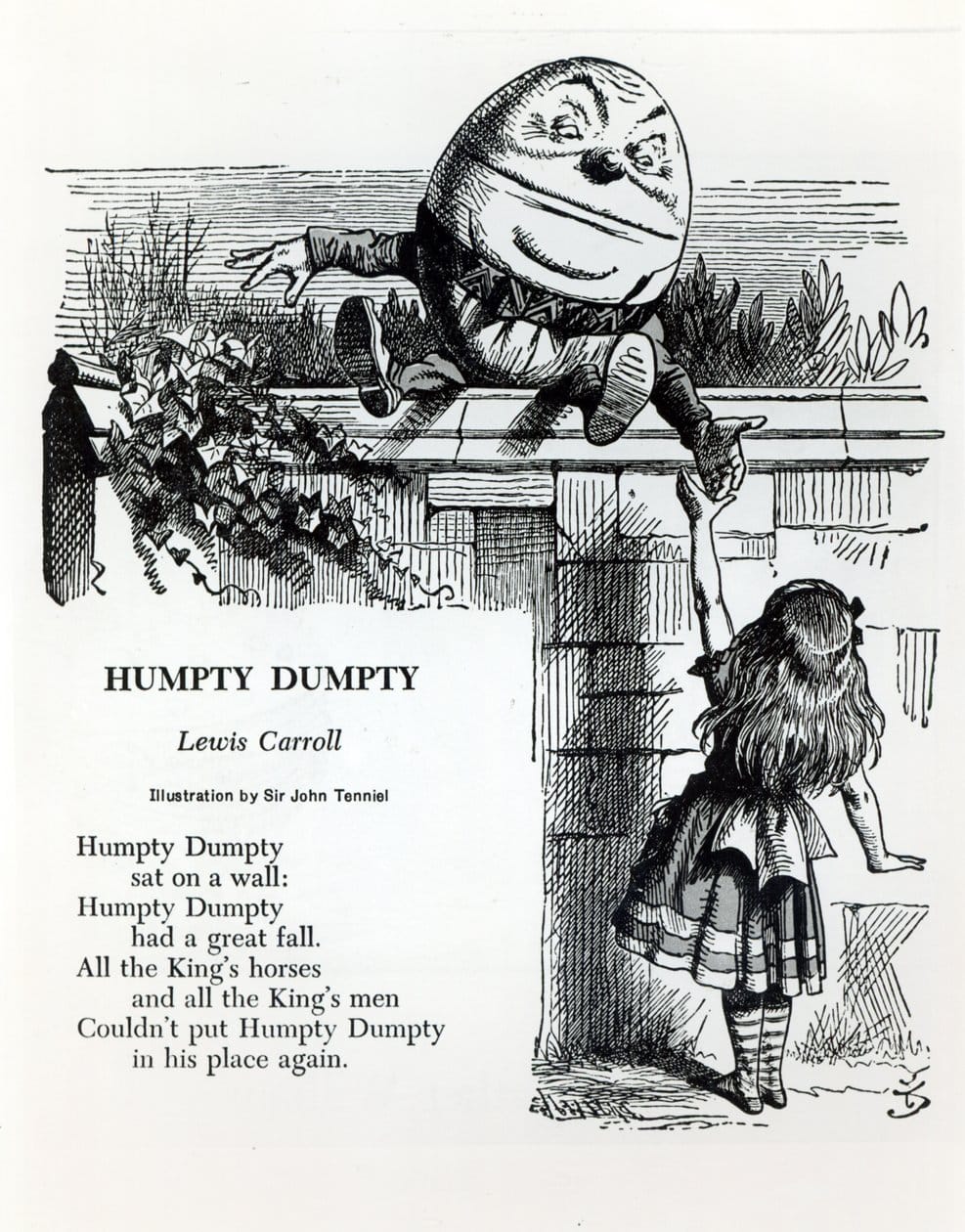
The truth is that I don't know how to live a natural, healthy life in 2025. I work on a keyboard all day, scattered across dozens of applications. I stare and stare and stare at screens. I eat my fair share of processed foods.
I still look for a more congruent way to live, and I have been looking for years. Paleo and intermittent fasting and trying Crossfit in 2008 — then adopting minimalist footwear (and founding BirthdayShoes). Spending a decade on the plateau of lifting heavy weights. Taking a year to try jiujitsu. Working to incorporate more movement in my life through pursuing 5 million steps ... These (and more) are all things I've tried, experimented with, and learned from.
I'm still learning. Though I may not be able to escape modernity, I can keep on walkin' — or running. With every step I take, I may just get a little closer to finding a more integrated way to live.

The path continues
So that's my story. My daily step goal was arbitrary, yes. What I thought I wanted was a healthier heart, but like so many things, I got much more than I'd bargained for.
This was a very good thing. I learned I could run after all. I took time to move more in the world around me. Yes, I improved my heart and health. What surprised me is how this pursuit improved me: I got that much closer to a more congruent way to live.
Thanks for reading — and if you're new to BirthdayShoes, stick around because there's more to come.
📫 If you're interested in pursuing your own annual step goal, try out this "How many steps per day, week, and month?" Calculator, and let me know what you think.
Afterward 🚶♂️➡️
If you're still here, below is more material, including notes about the aches and pains of so much walking and running, the equipment I used, and even how I walk and speed read at the same time. Click to expand.
Foot pains
Outside of the major ankle sprain suffered last September, I have had various foot aches and pains over the course of adding all this extra walking and running into my daily life. None of it has been debilitating enough for me to seek help or even consult Dr. Google. And the aches and pains haven't been particularly consistent either. I've had things like:
- Top of foot pain
- Arch pain
- Achilles' tendon pain
And generally, I've had those aches and pains that make the first few steps taken once you get out of bed uncomfortable. I'm curious if these will still go away in time with adaptation.
Over the course of my walking (and running), I've used a variety of footwear, most all of which has been minimalist. More on this in equipment.
Equipment: shoes, sandals, HRM, treadmill, watch
I often have worn a heart rate monitor. I used the Polar H10 for a long time until it started acting erratic and battery changes didn't fix anything. My current HRM is the Garmin HRM Pro Plus. Overall I like it just fine though it's harder to clean than the H10.
I already mentioned my treadmill — the NordicTrack x32i (What a clunker rating on Amazon!). Take a look back up the post for more on this machine. The TL;DR: It's great for an incline and has a responsiveness that makes it feel less jarring to move on. But it's not without issues. I had to install some software to take control of the device, and I don't use iFit.
I really like my Garmin fenix 6x Sapphire. Amazingly you can stil get one on Amazon (renewed). I just like the simplicity of this watch. I use it for all the tracking. It's also handy for timers and for making sure I don't miss calls from the missus.
Shoes.
Xero Shoes HFS Original: I have logged the most miles by far in my Xero Shoes HFS Original (read my full review). I was graciously given by my friends at XeroShoes back in early 2023. These things work wonderfully on the treadmill. But while my treadmill has some shock absorption, the HFS Original are not so forgiving on roads. Again, you'll want to read my full review for all the details.
Altra Lone Peak: Yes I did a good bit of walking and some running in these chunky shoes from Altra. I have a love/hate for these shoes. They have been very comfortable over the years (I've had a couple pairs over the last 10 years); however, I've injured myself now twice while wearing them. One time being my sprinaed ankle above. Another time my foot slipped over the top while jogging to my car and I think I fractured my Fifth Metatarsel near the joint (near the tuberosity) because of it — insane pain that took months to go away. Because I'm a glutton for pain, I never got it checked out.
Luna Mono. I didn't log a ton of focused miles in these, but I got a lot of ad hoc/marginal walking done in my Luna Monos. Review is here.
Other shoes not worth mentioning.
Reading and walking at the same time
Prior to this morning walking routine, I had a habit of using the same 30–60 minutes every day for reading. My walking habit was now interfering with my reading habit. The solution? Read and walk at the same time. How? I adapted my "speed reading" method to the treadmill. Here's the method: How You Read 50+ Books in One Year (PDF)
Seen on the trail
Below are various photographs taken on walks (or runs) in the woods or in my neighborhood, alone or with surprise guests. Going outside you see more of the world — walking up on deer or rabbits or turtles ... or your neighbor's happy dog ... or the morning sun. I share these photos because they remind me of all the good that came from this project.
